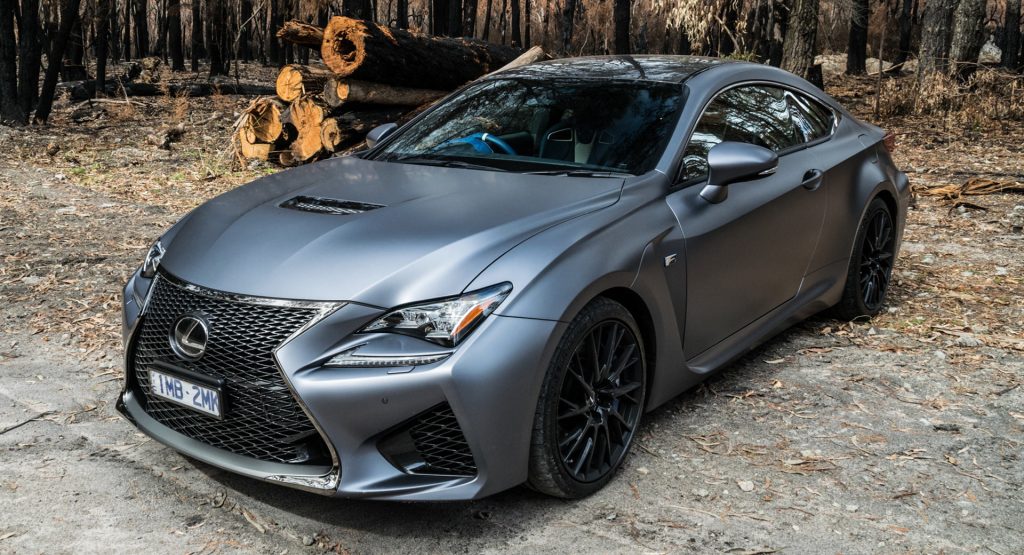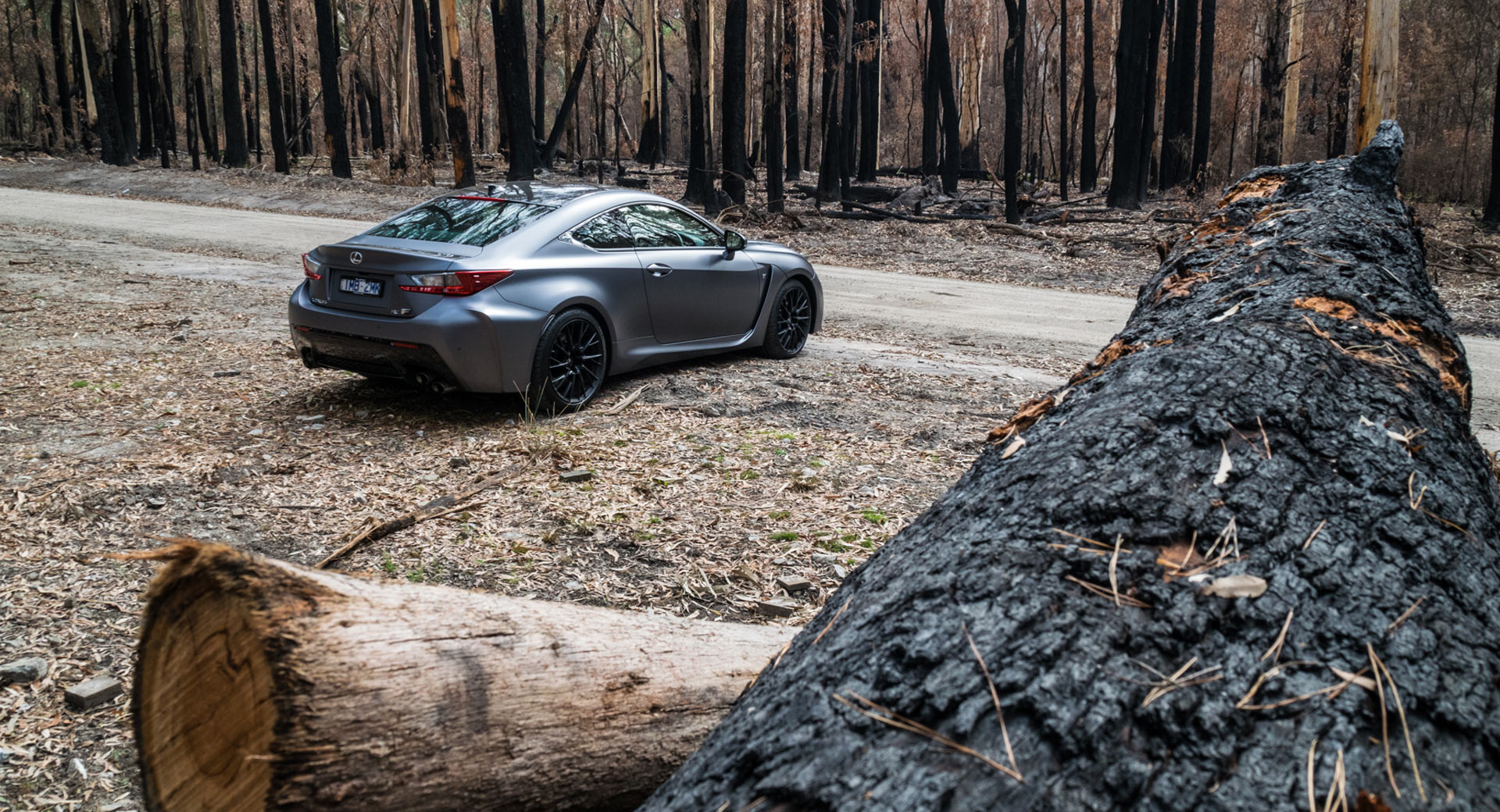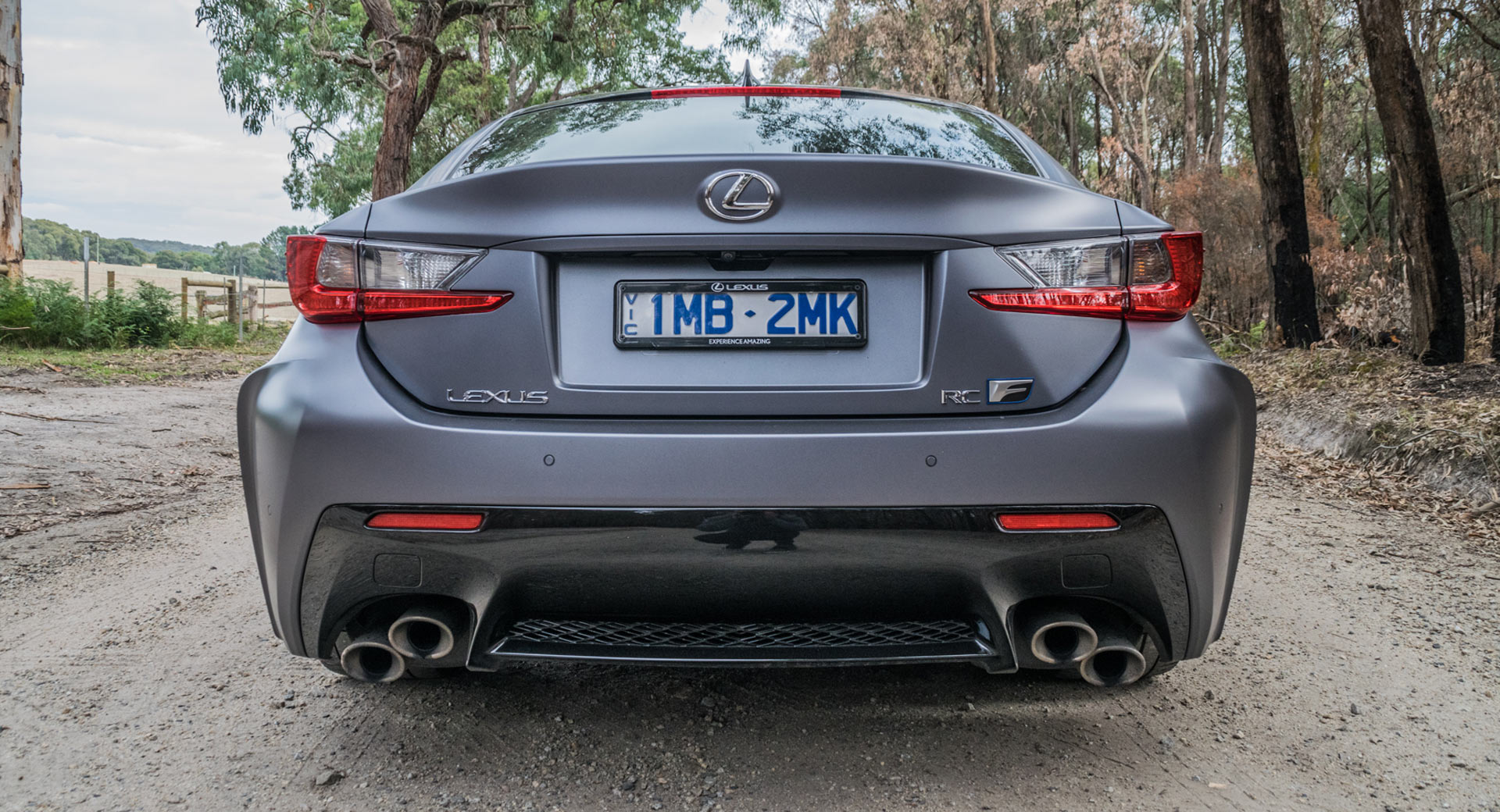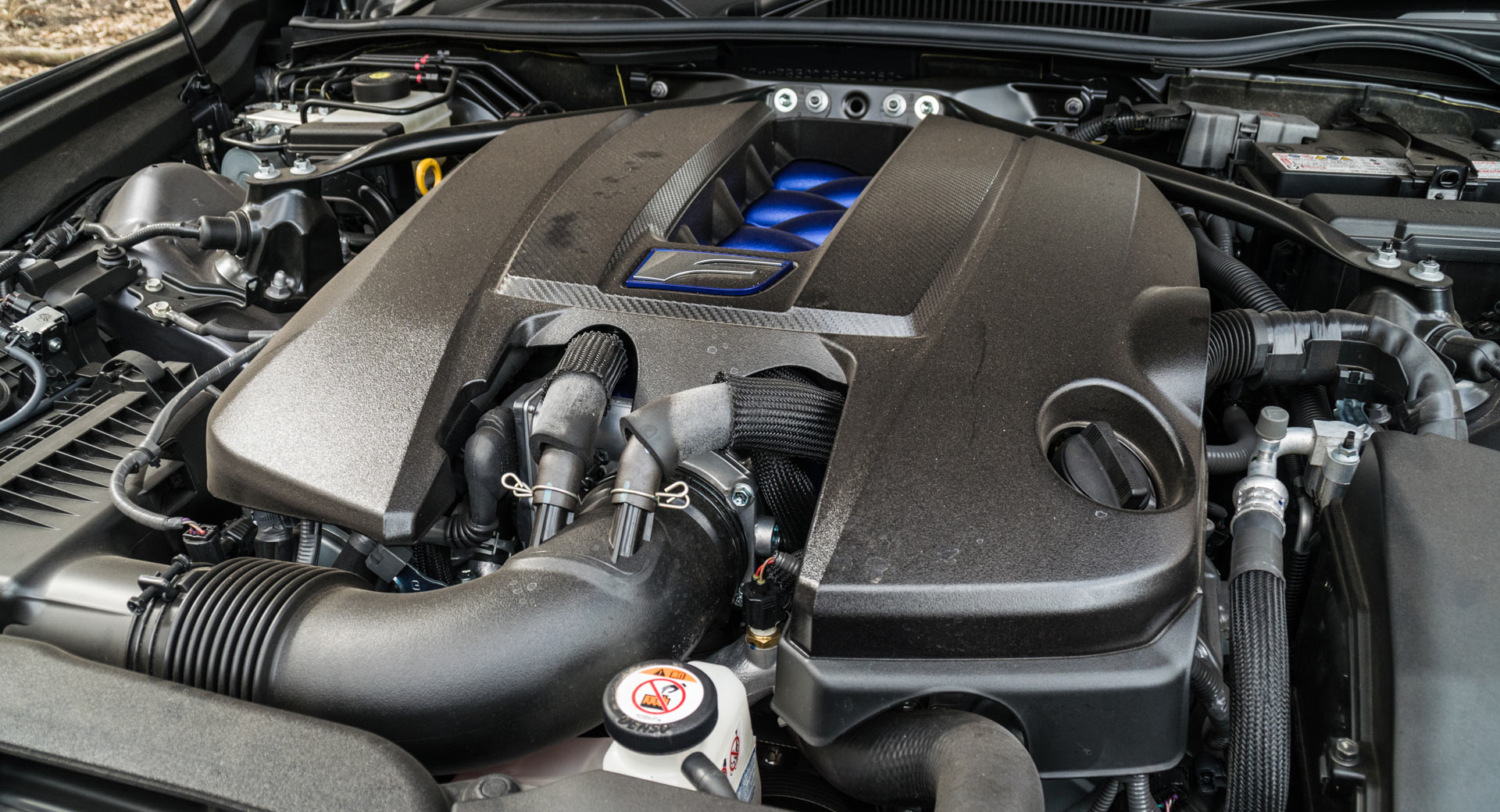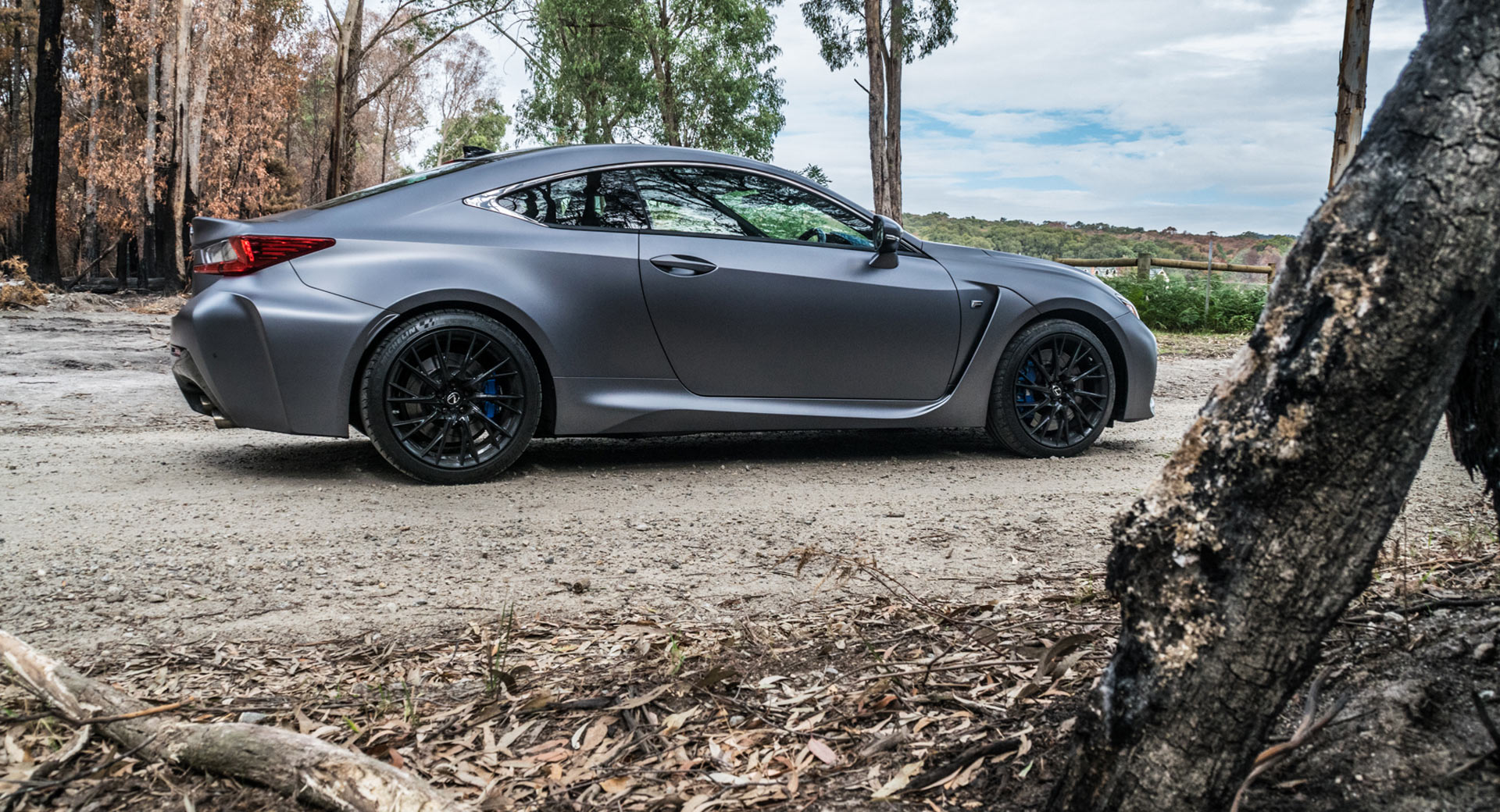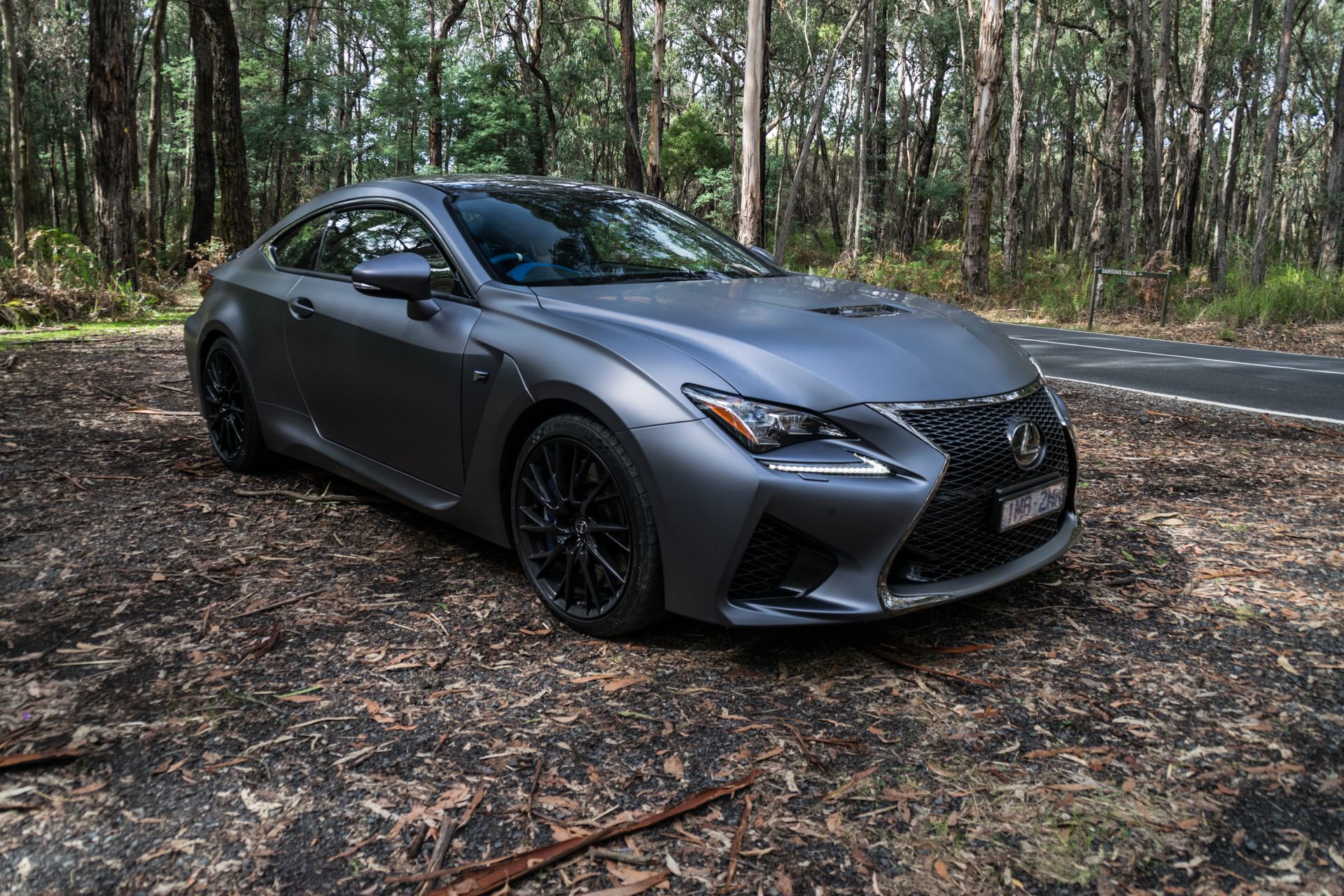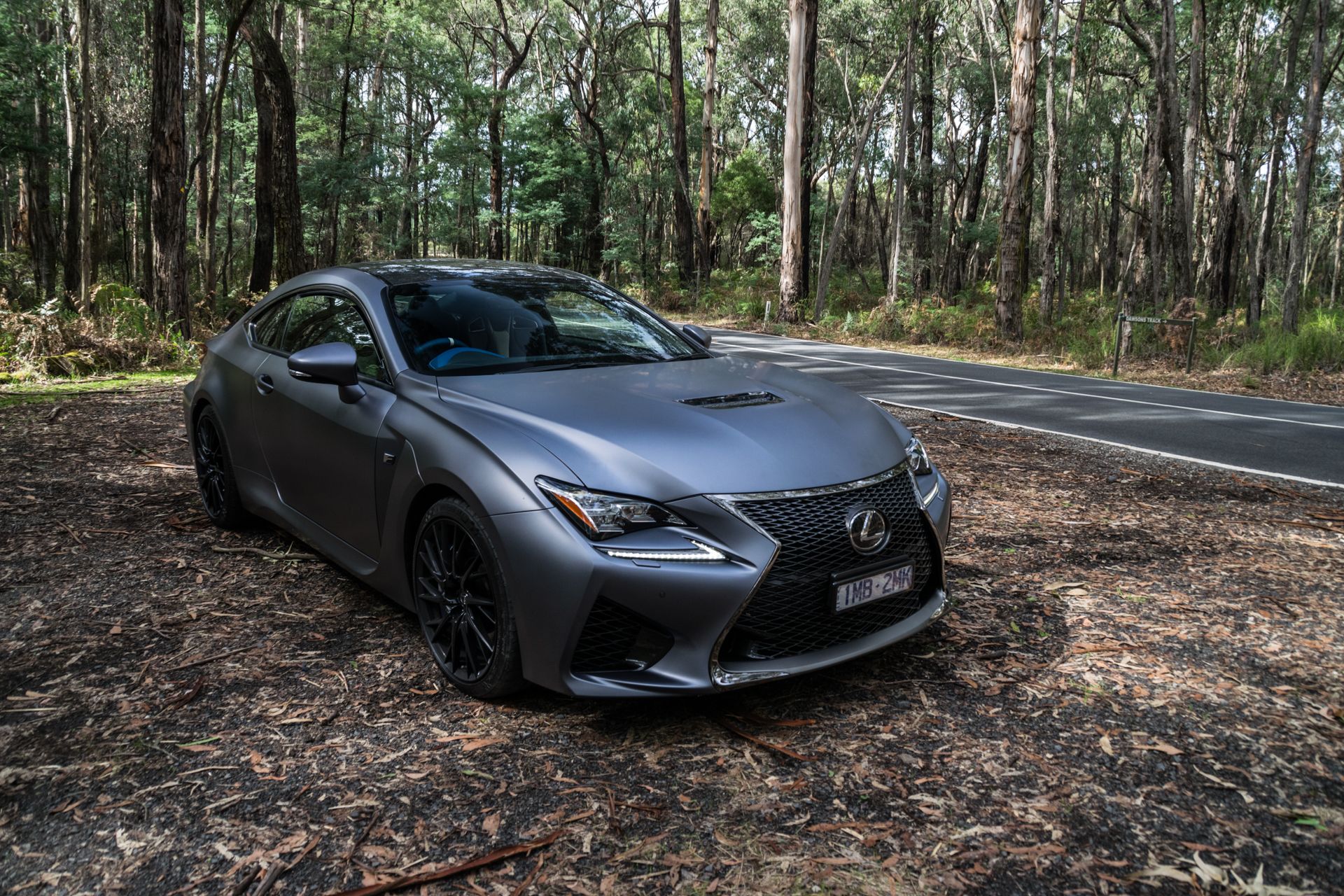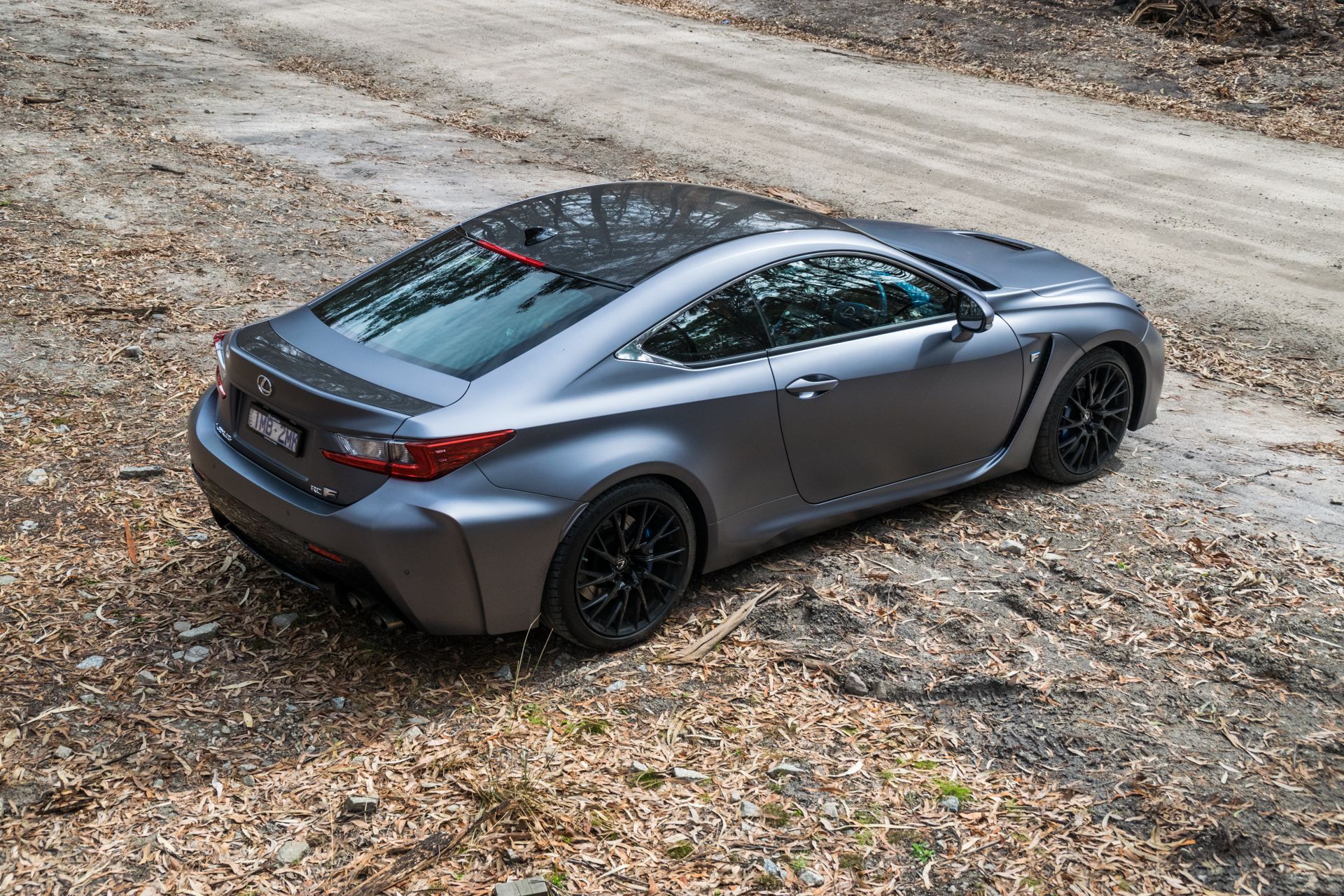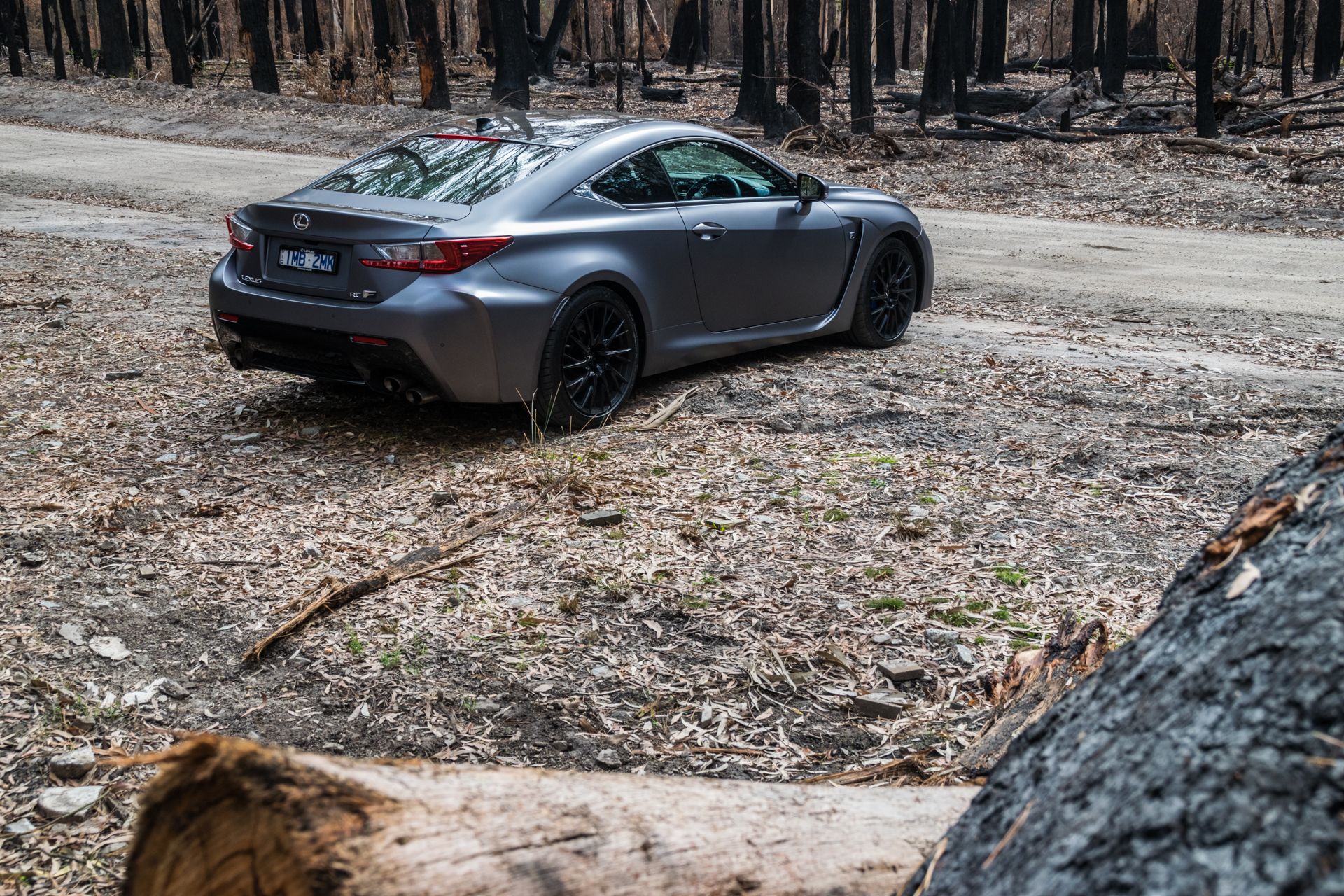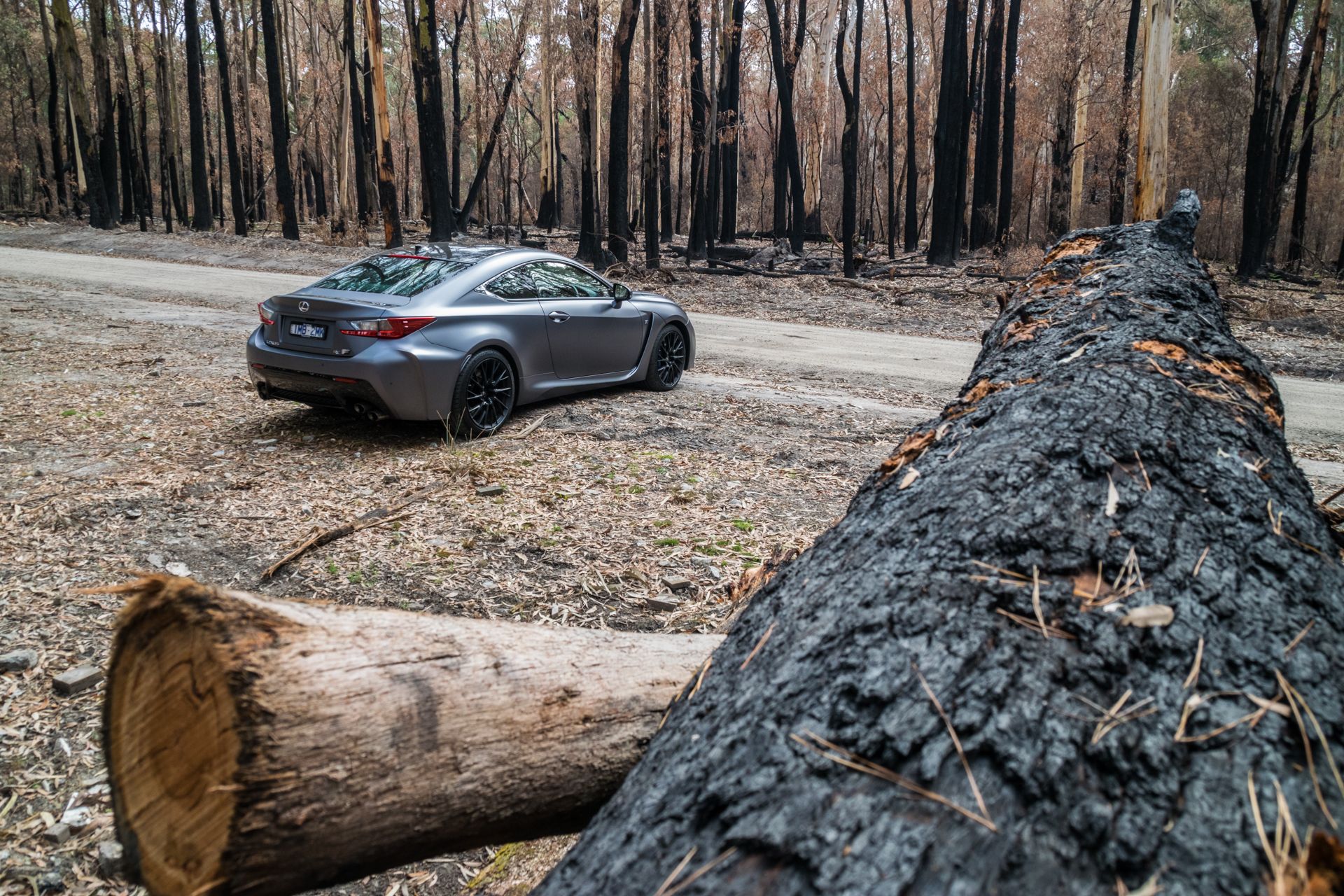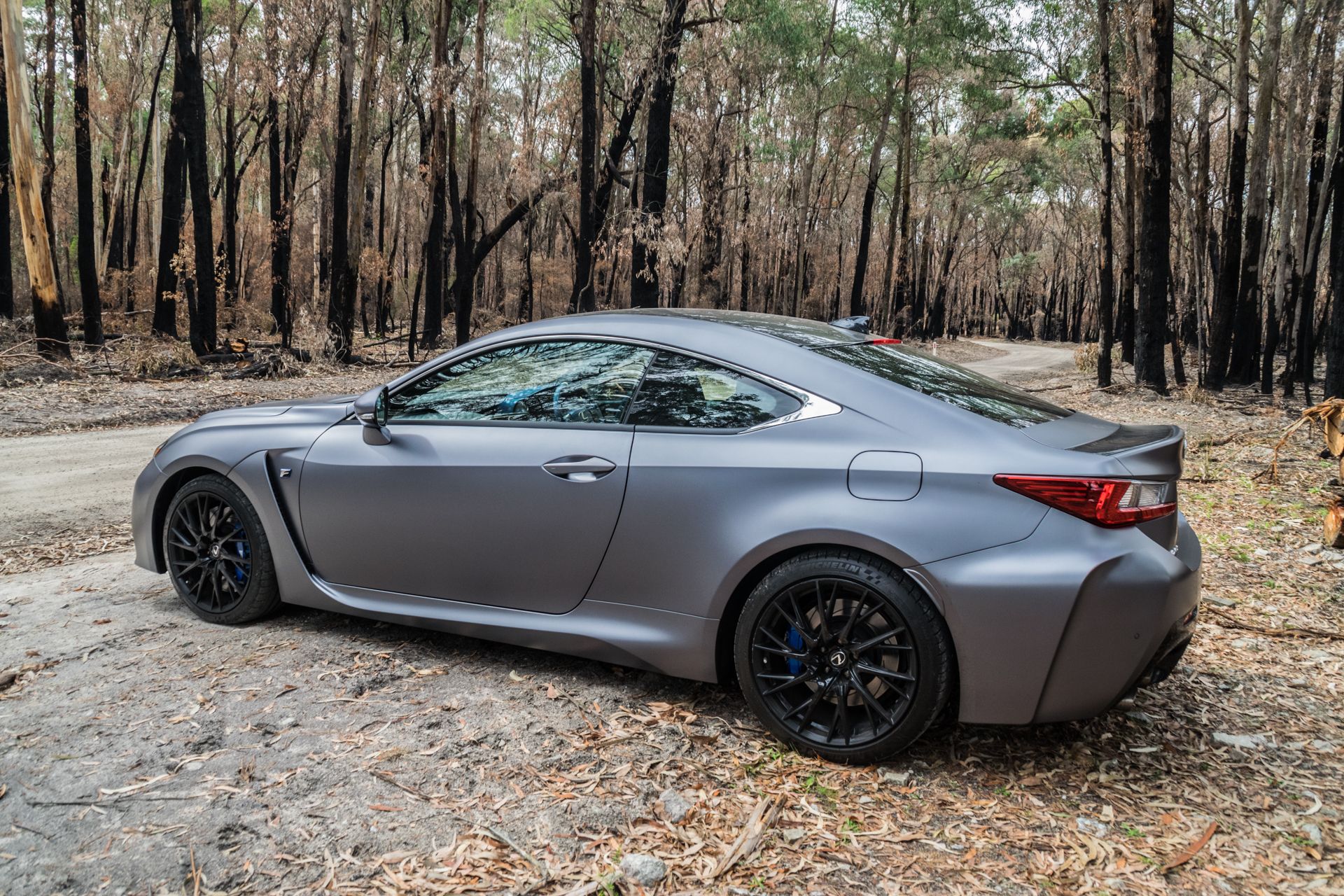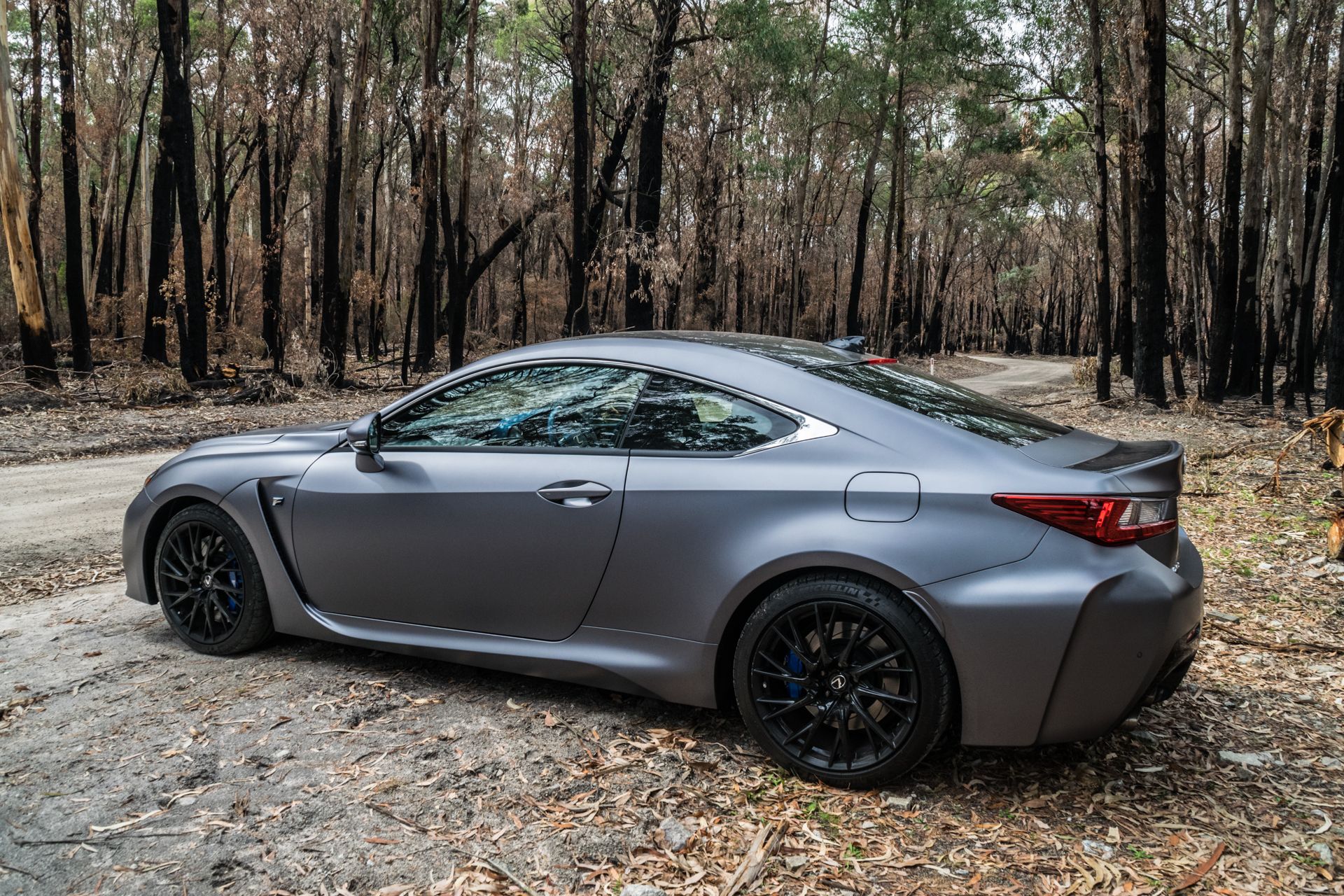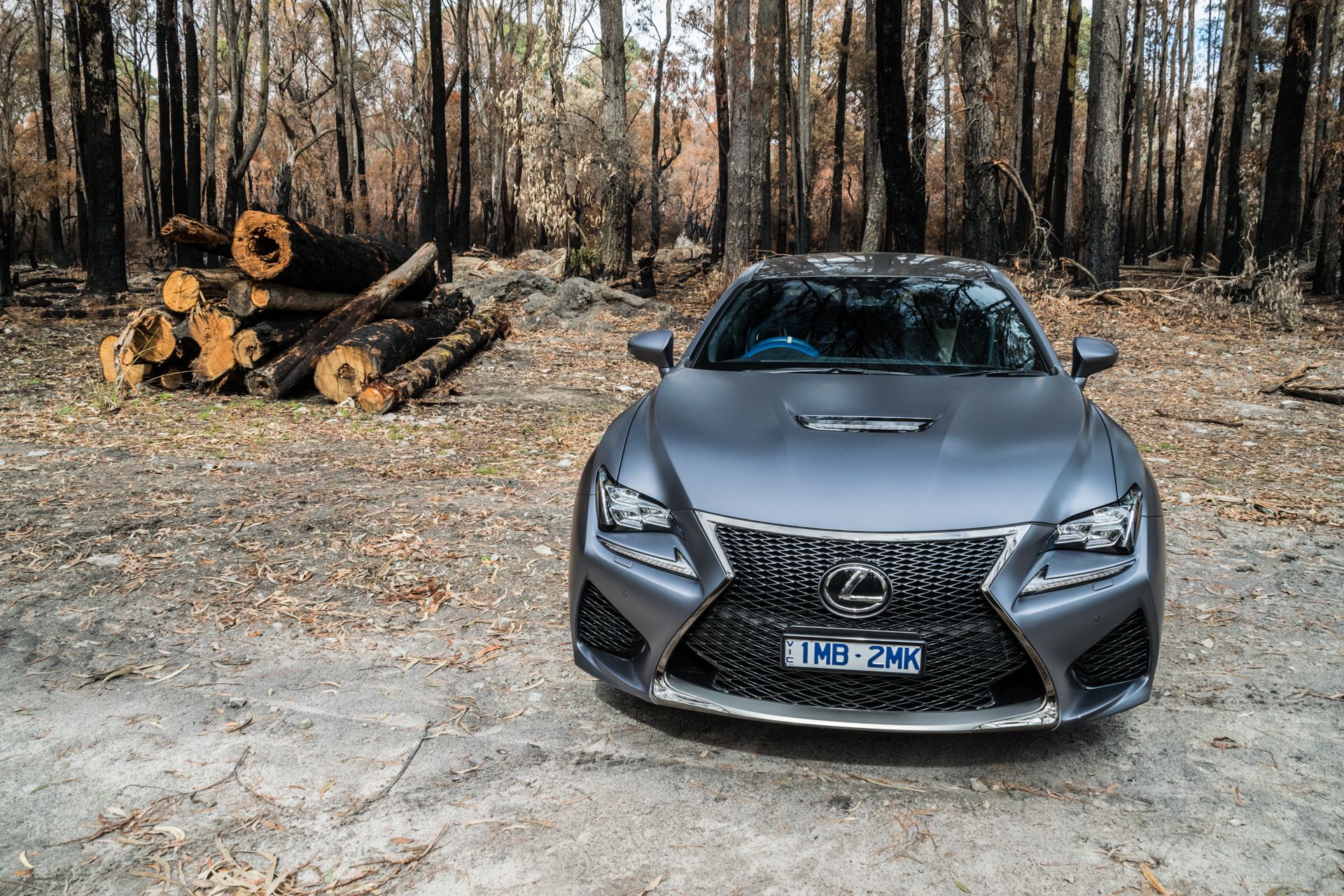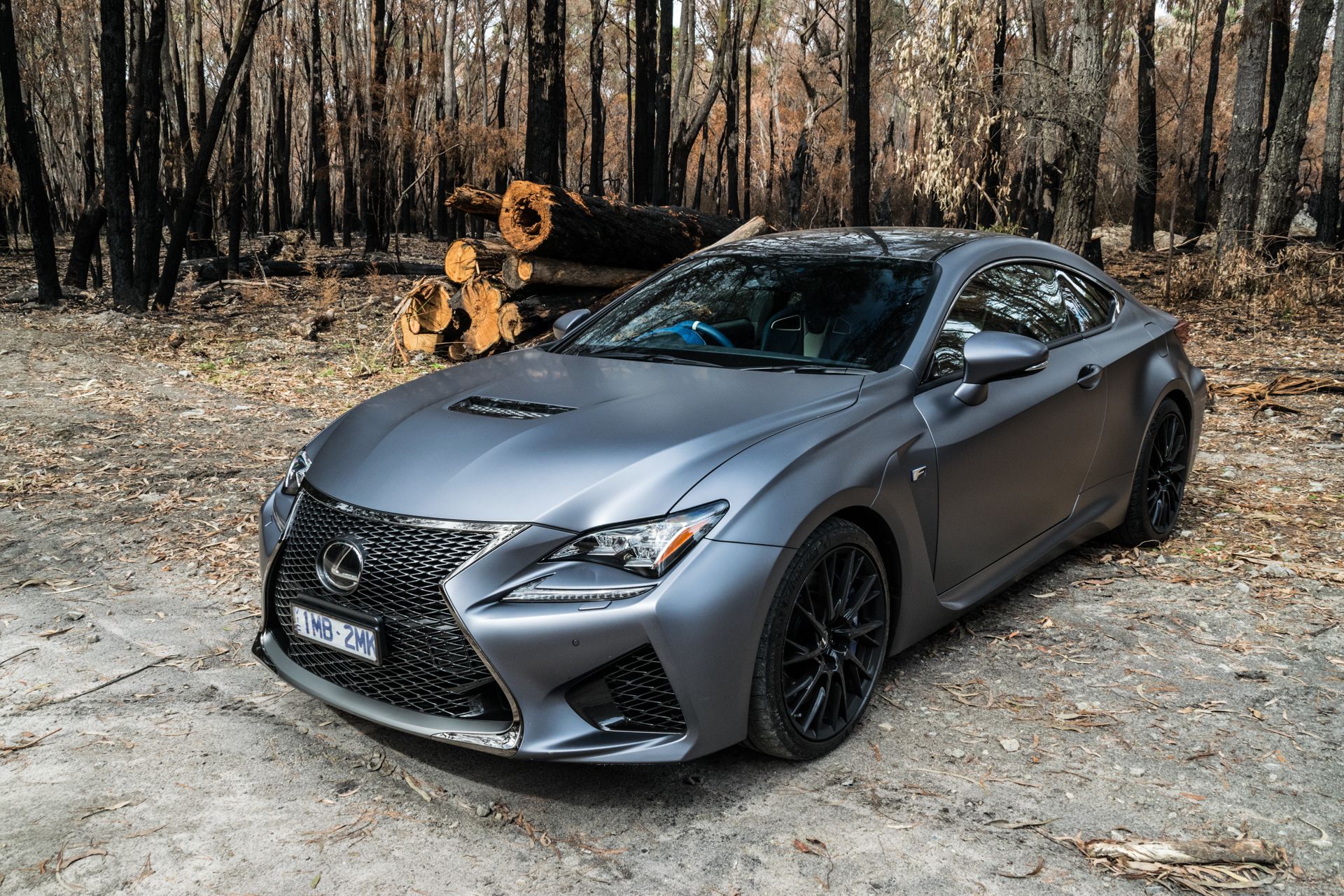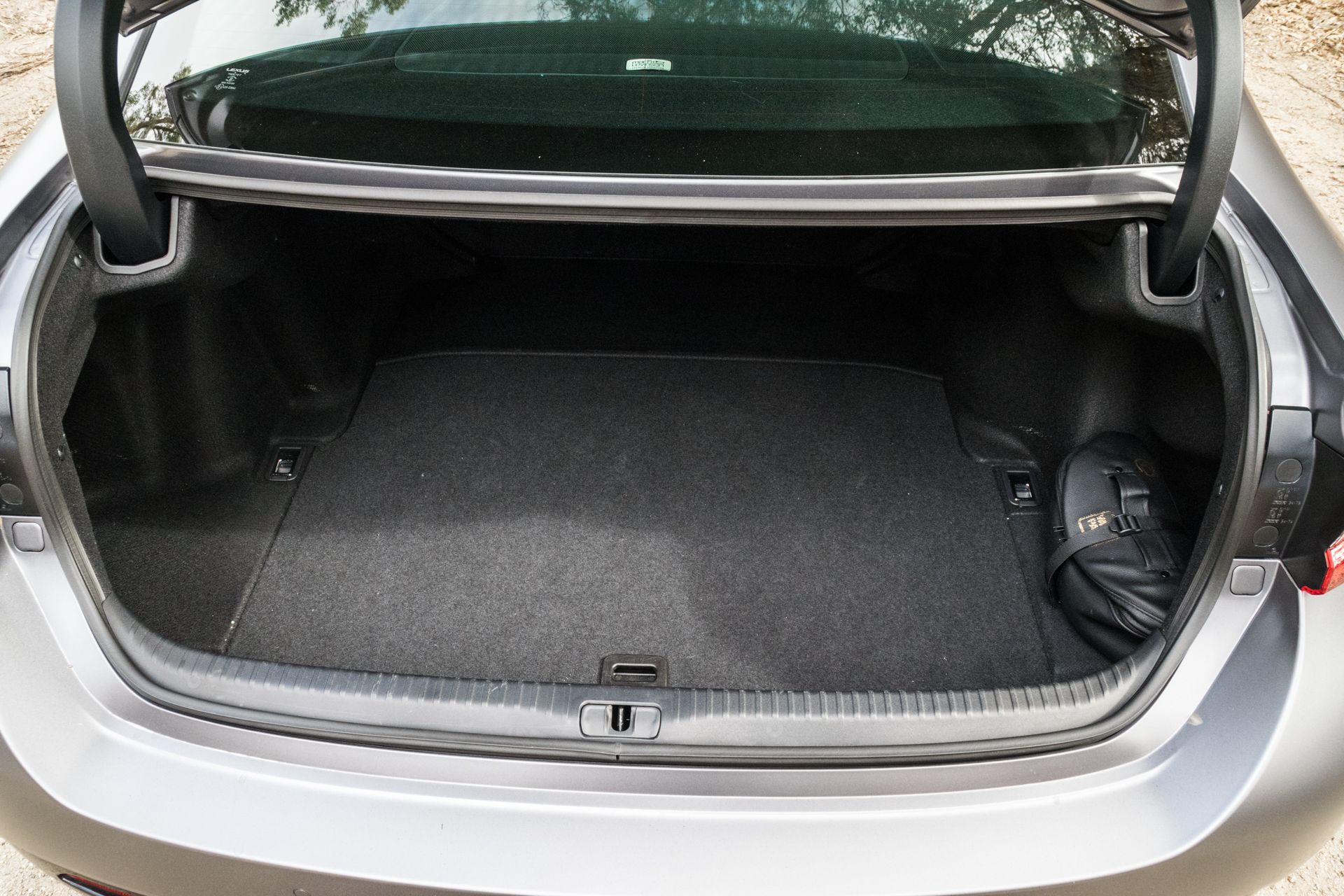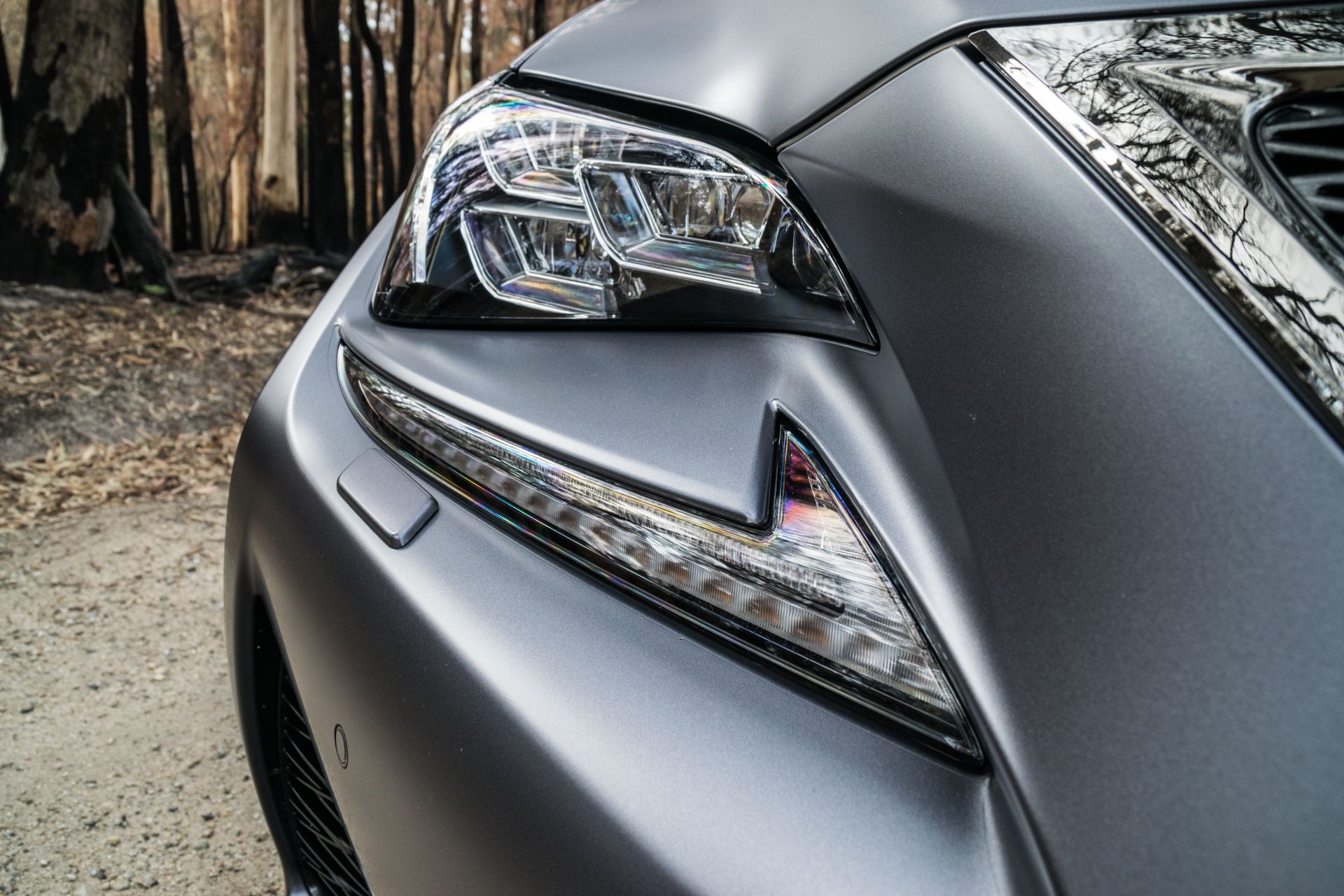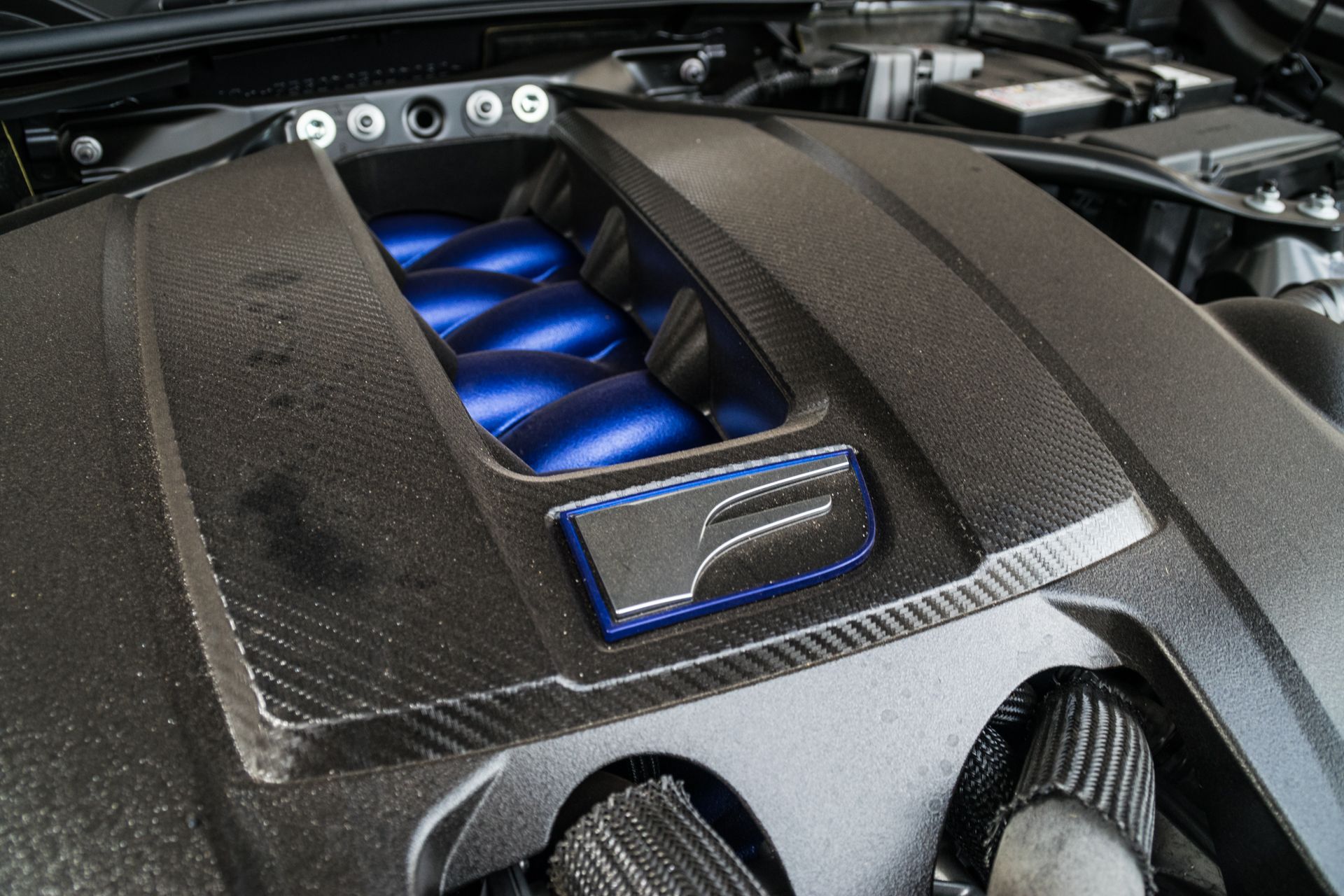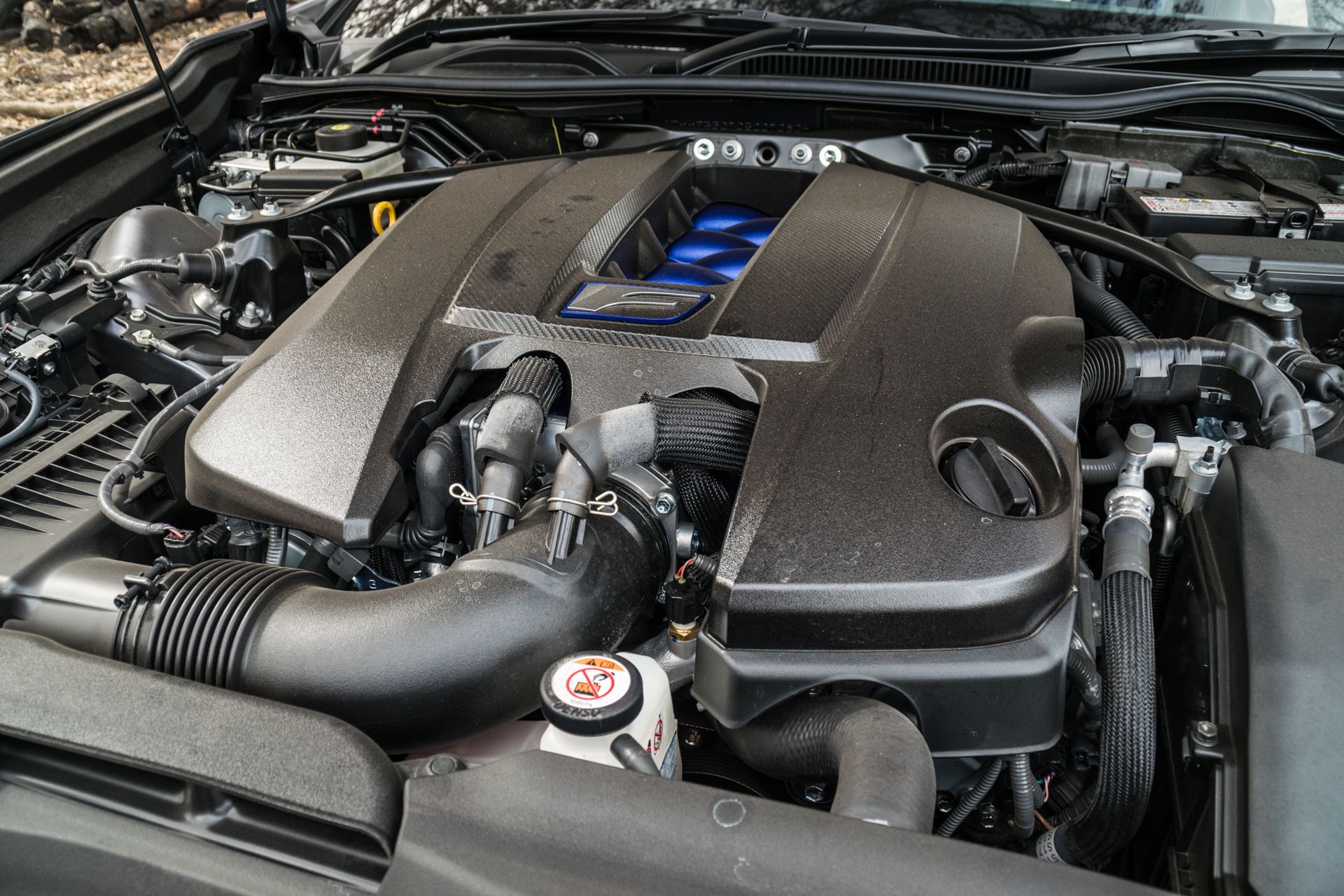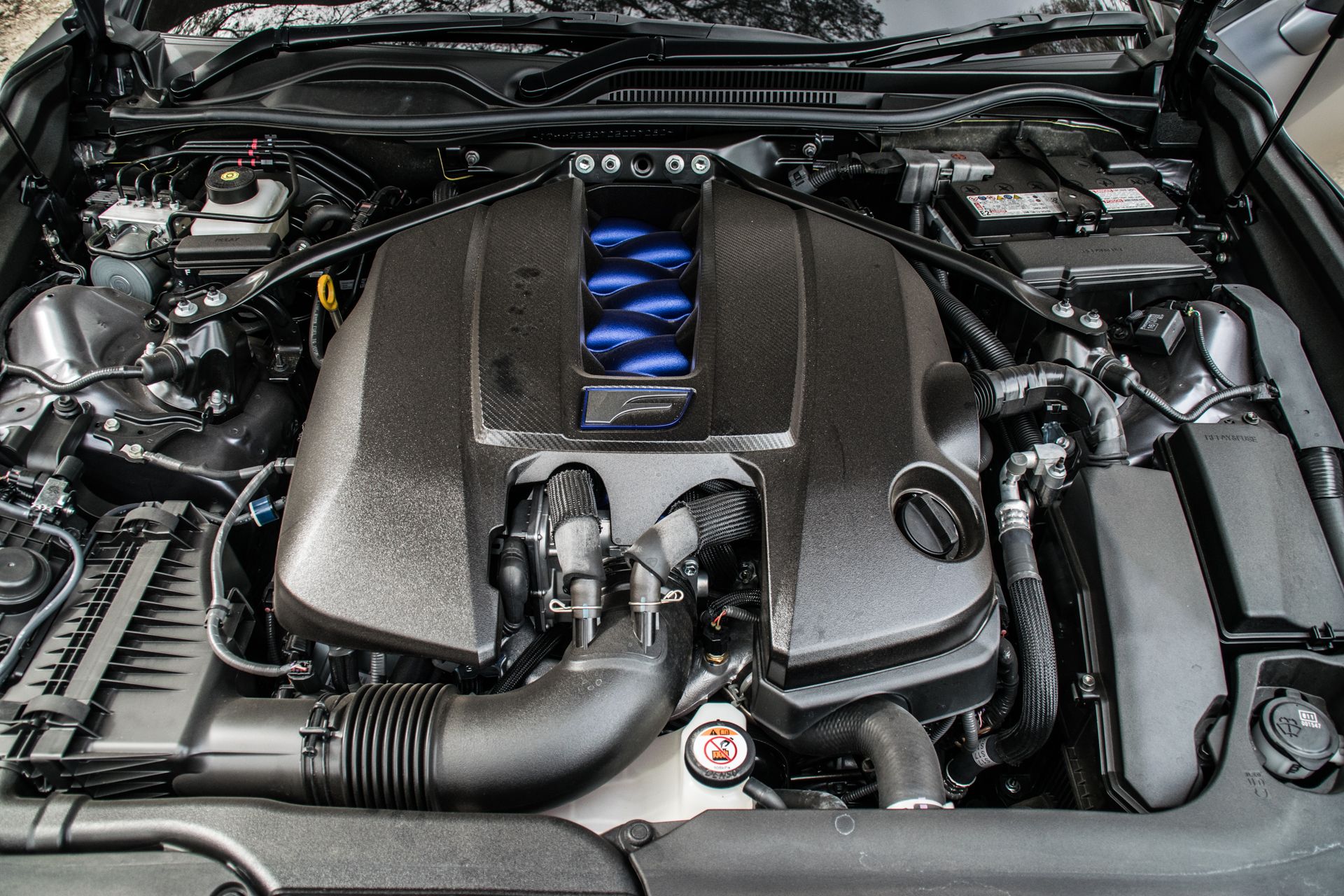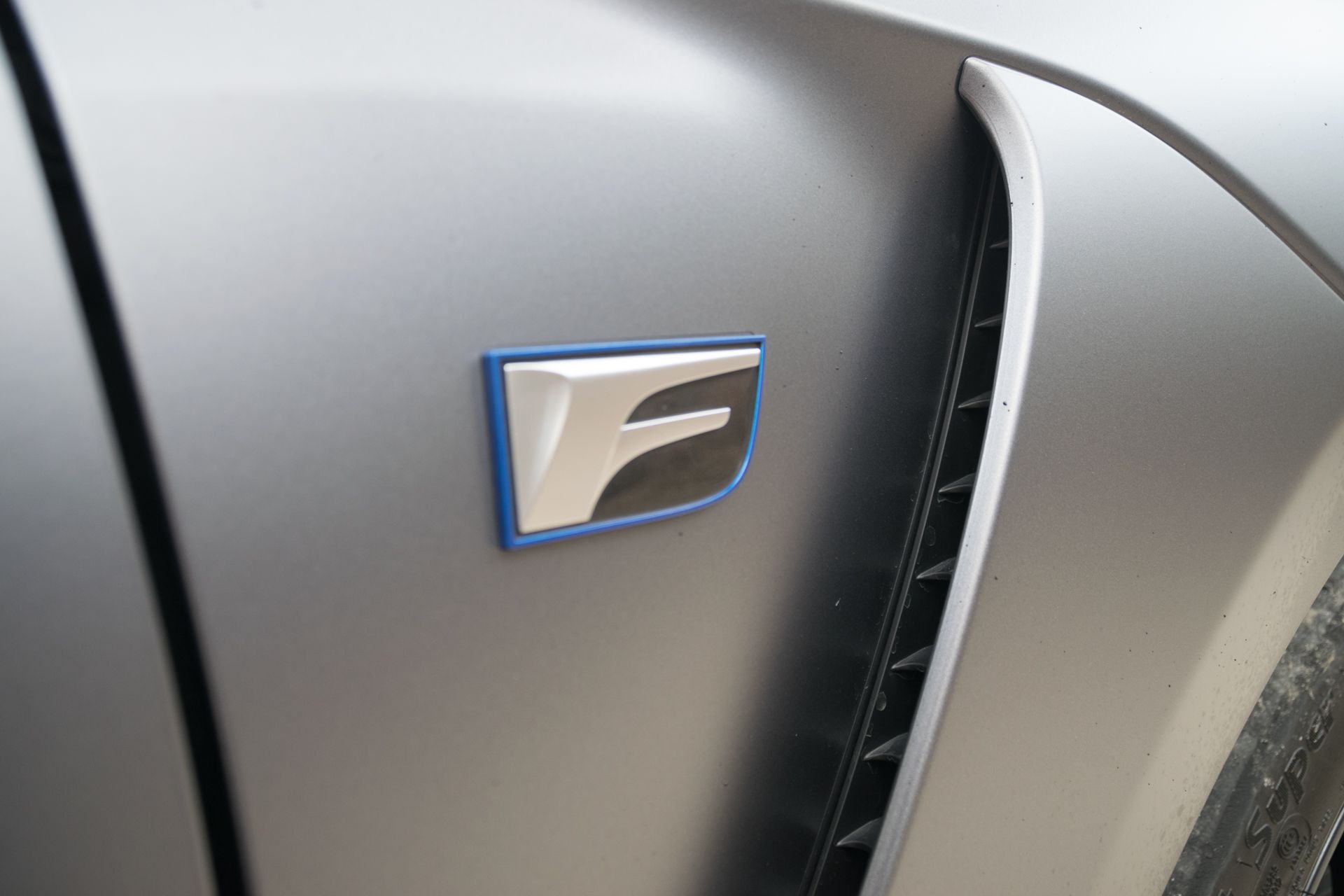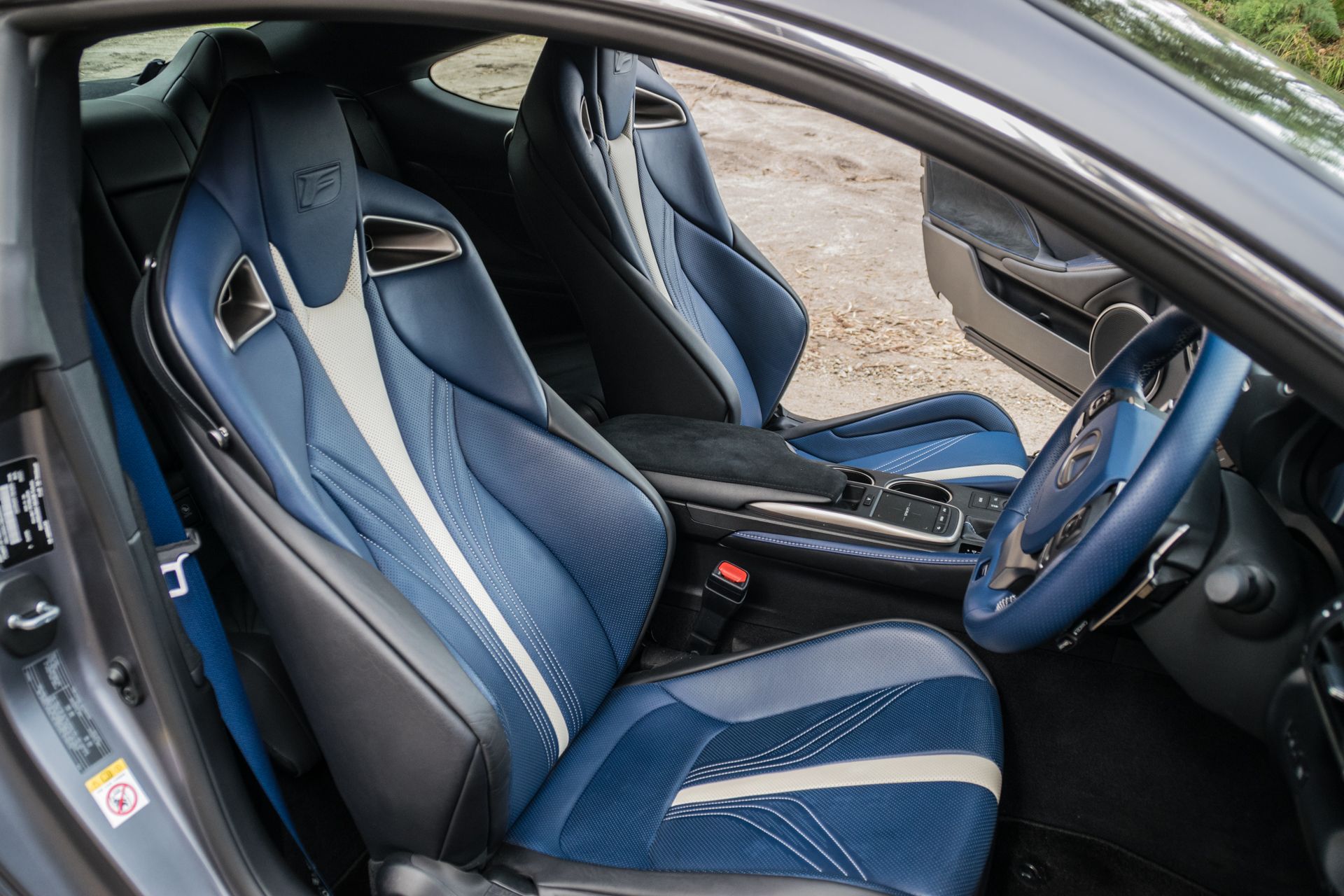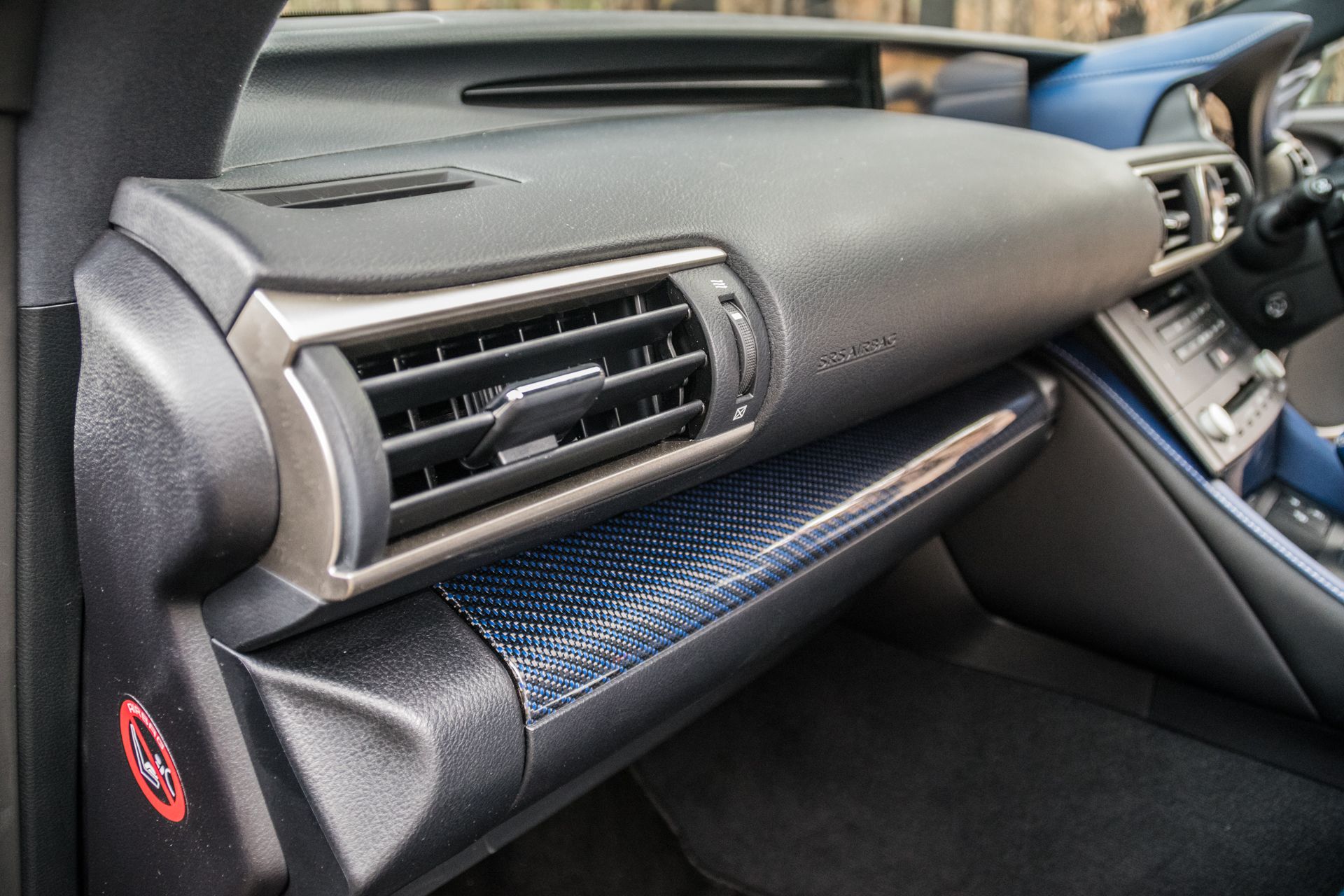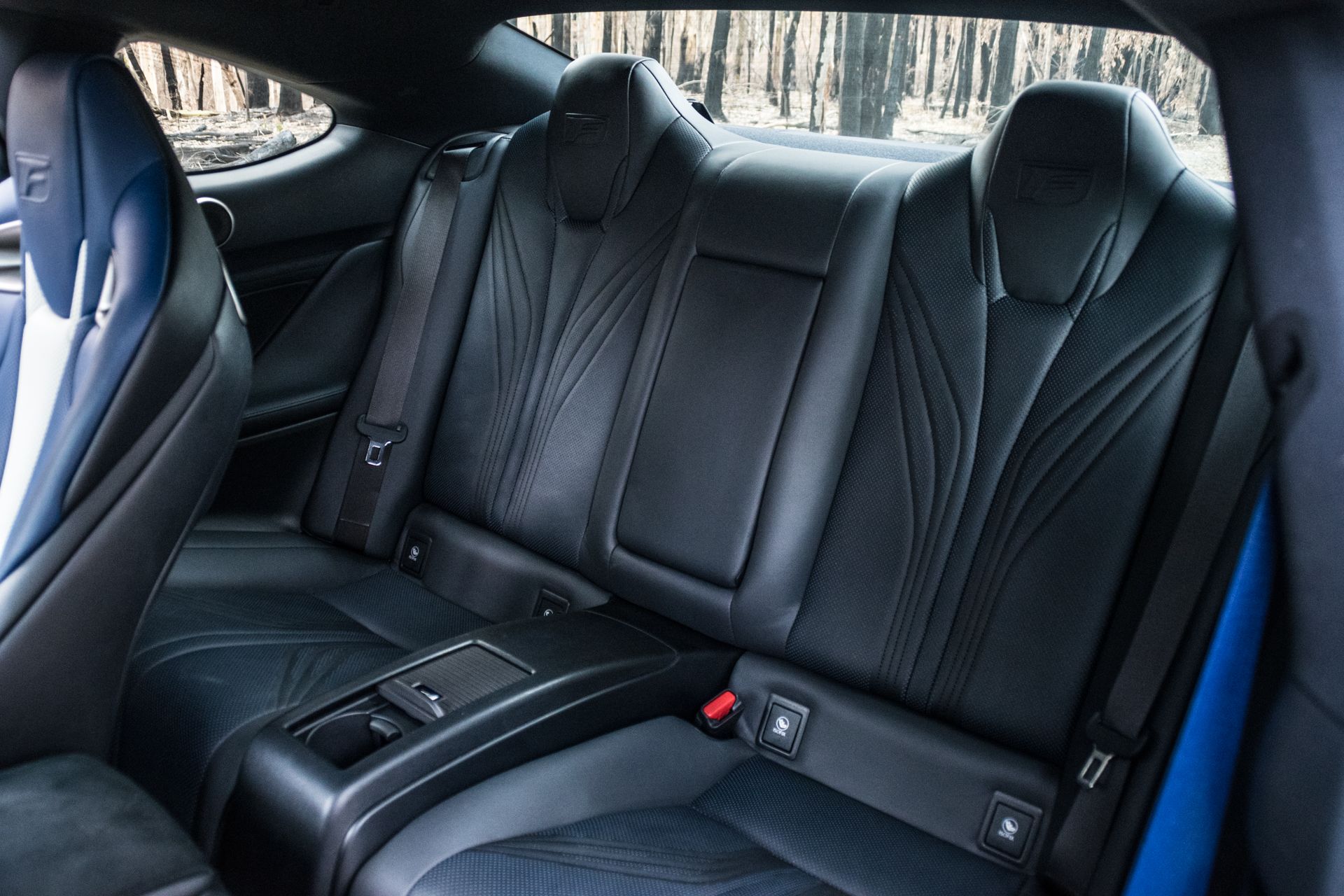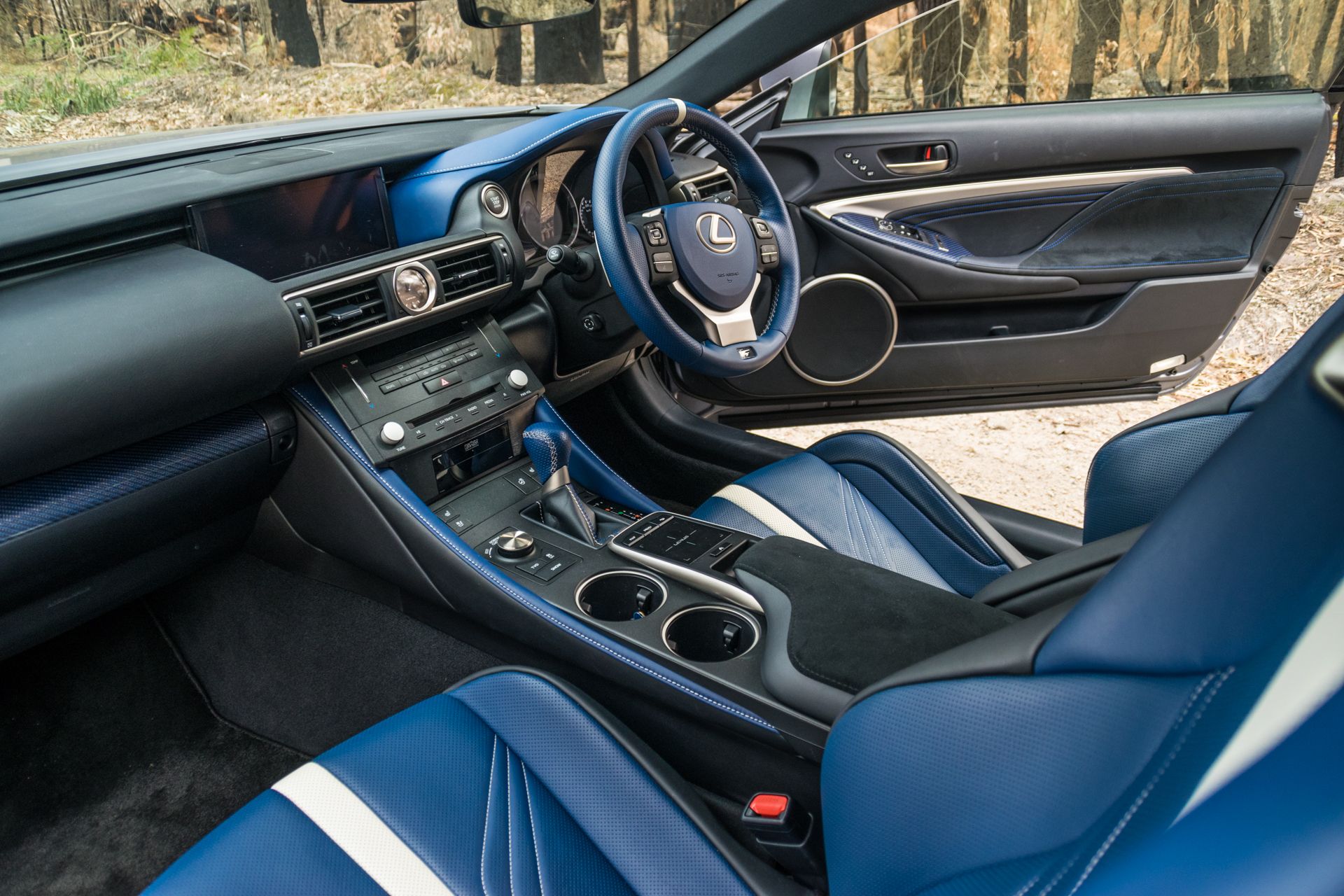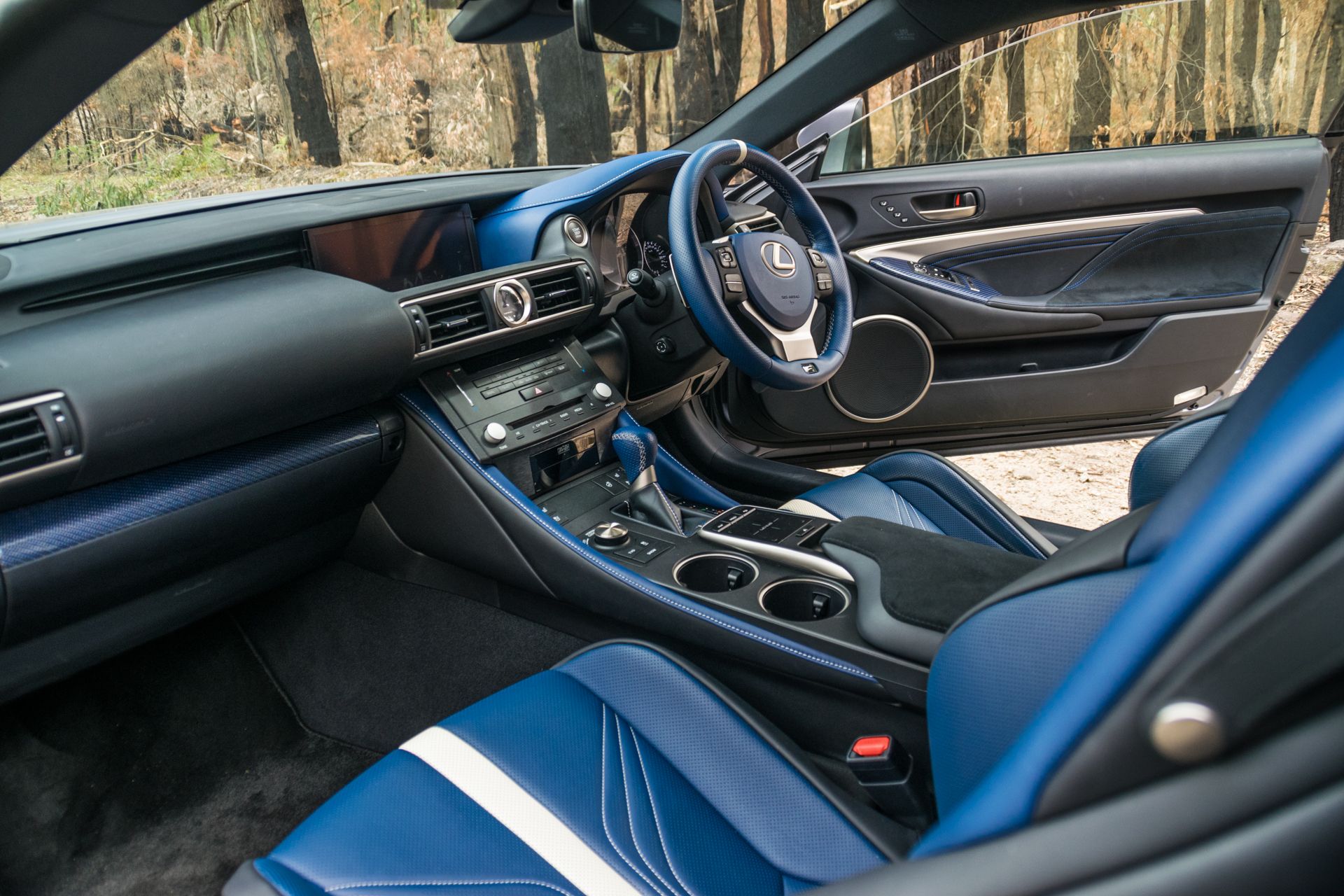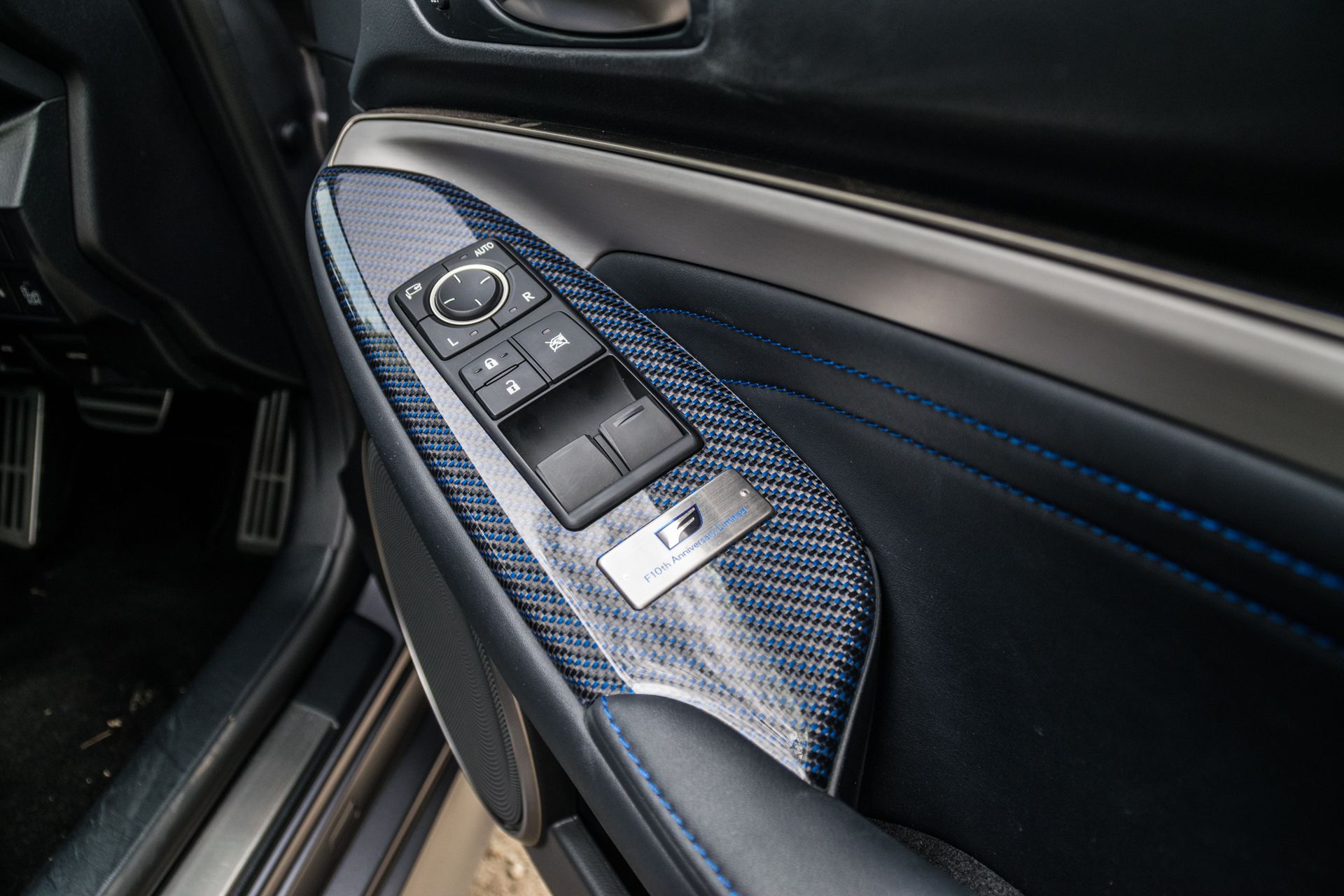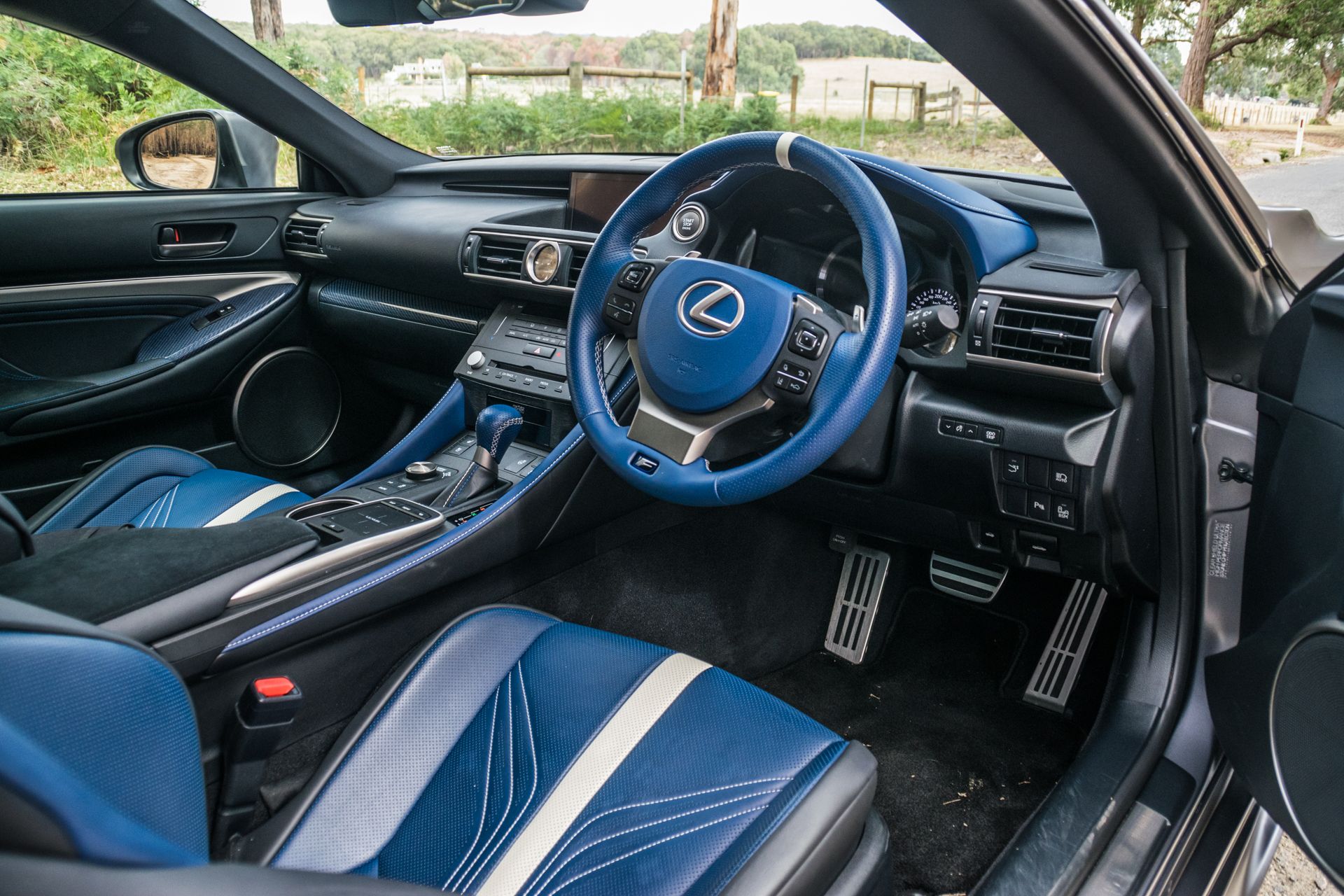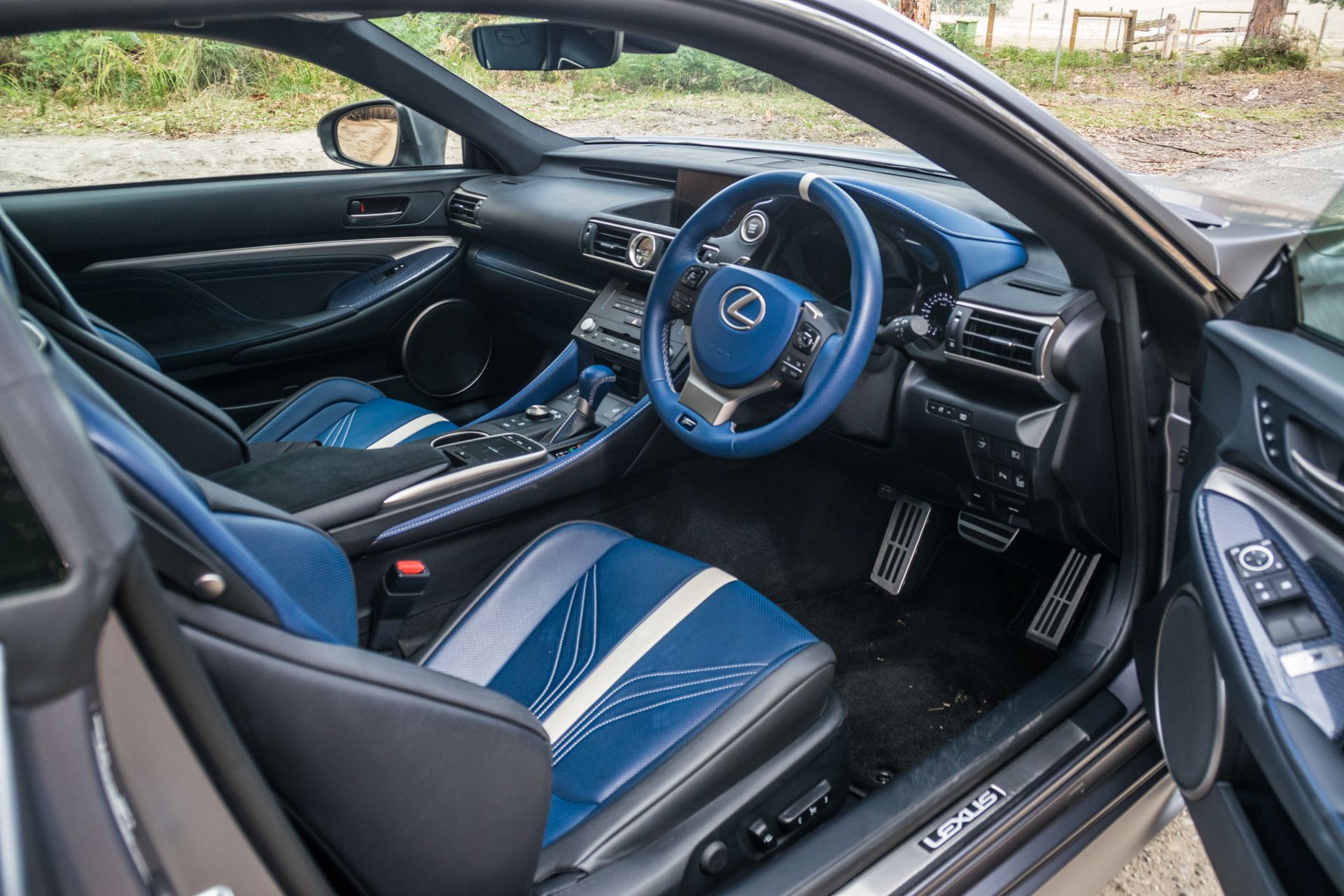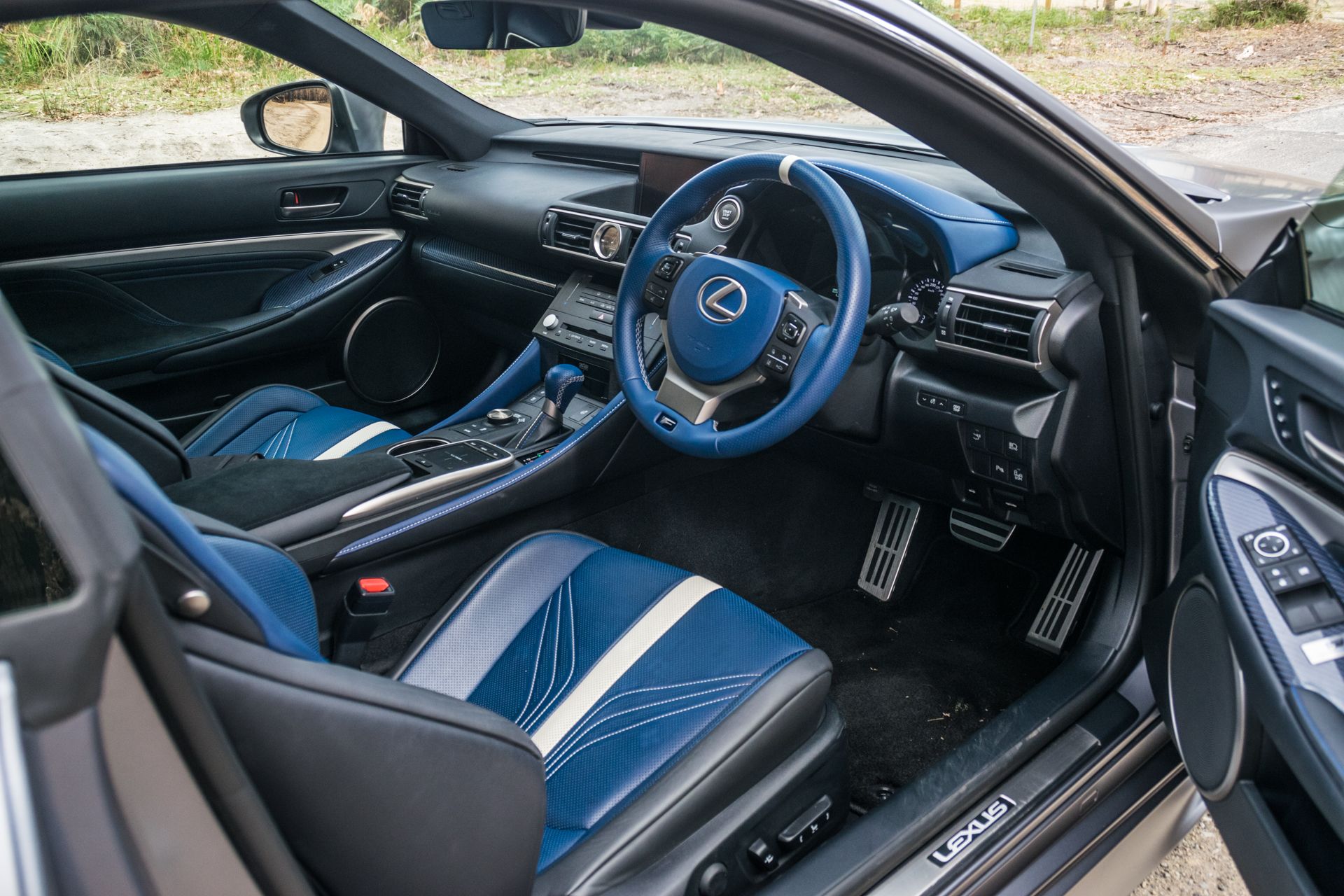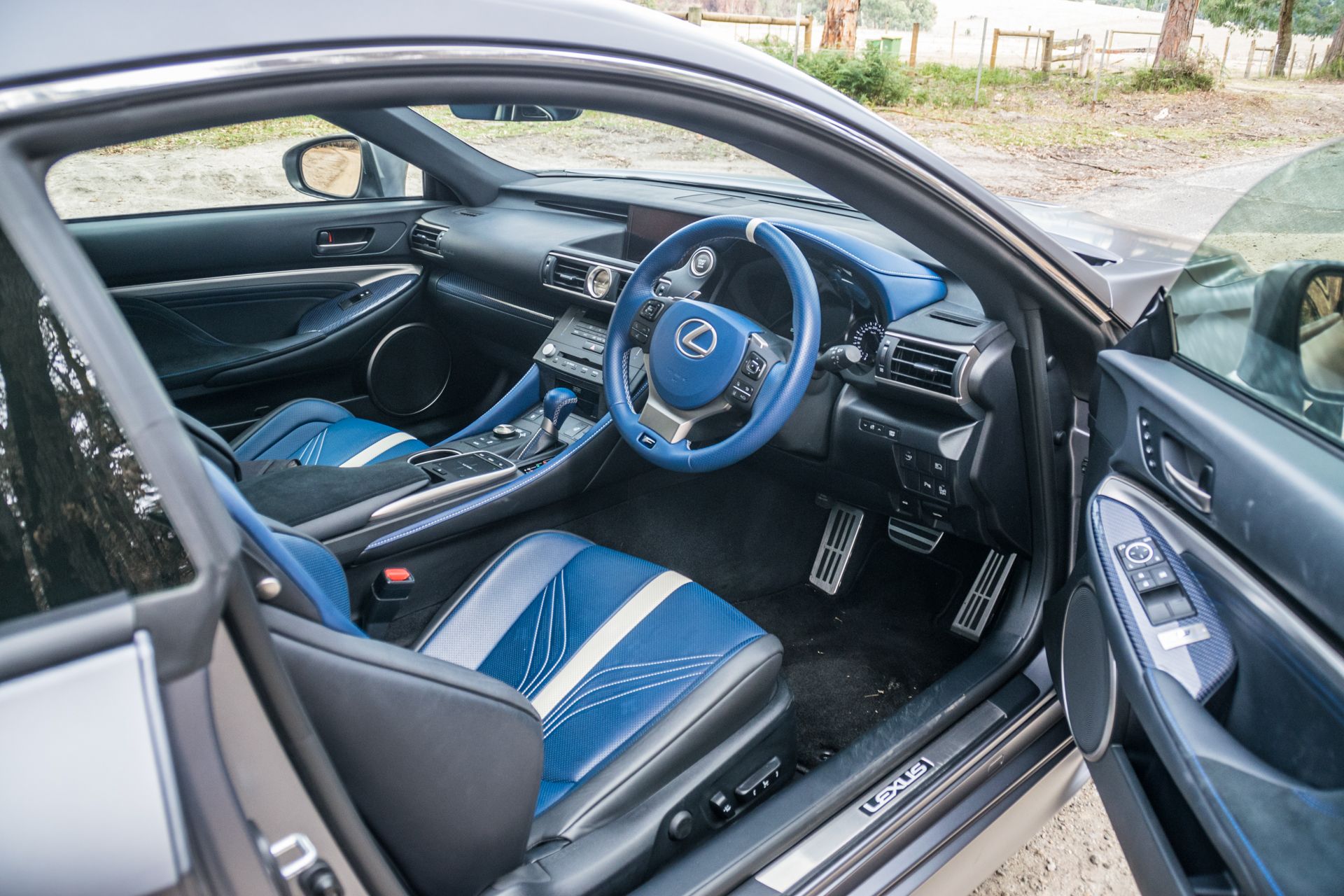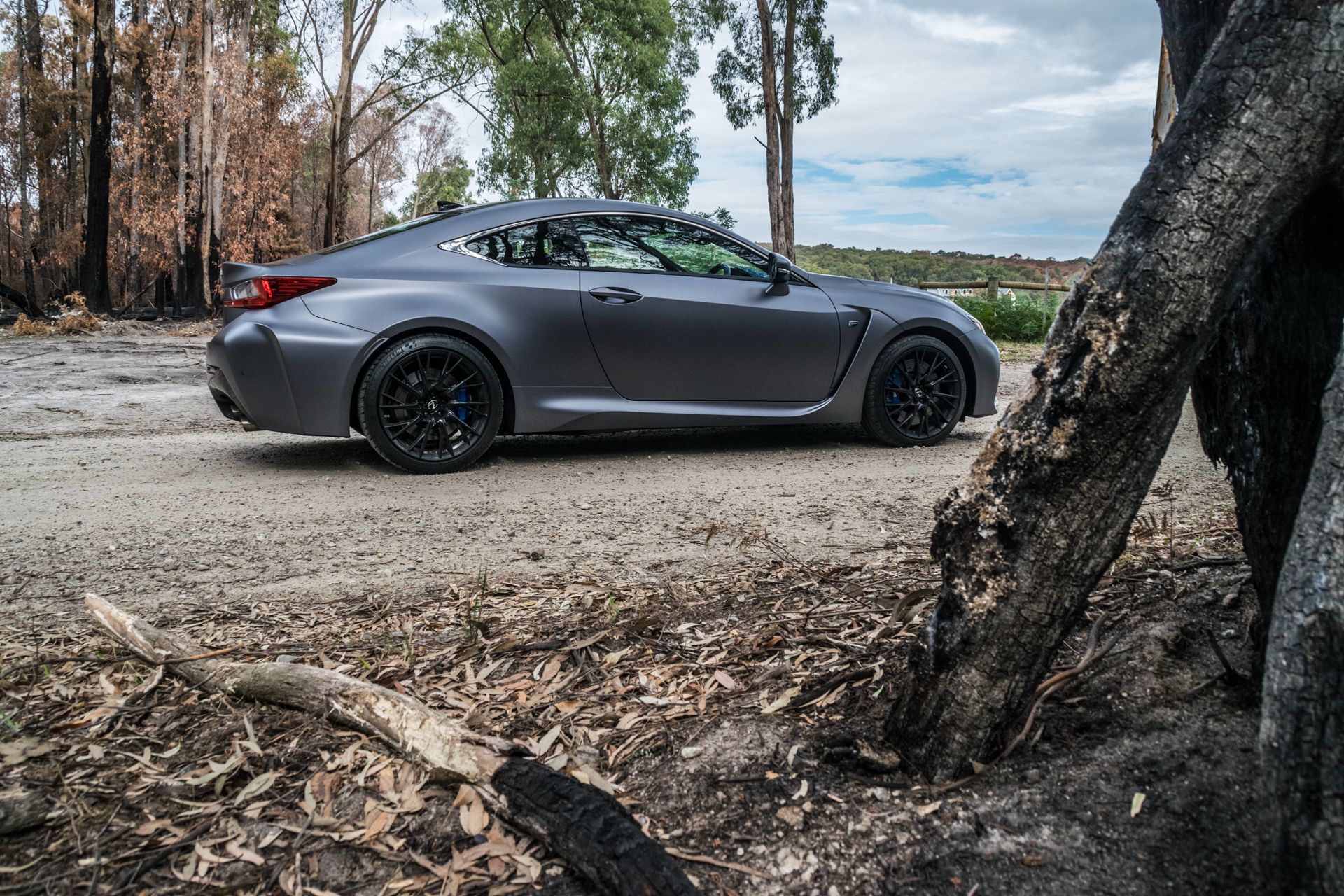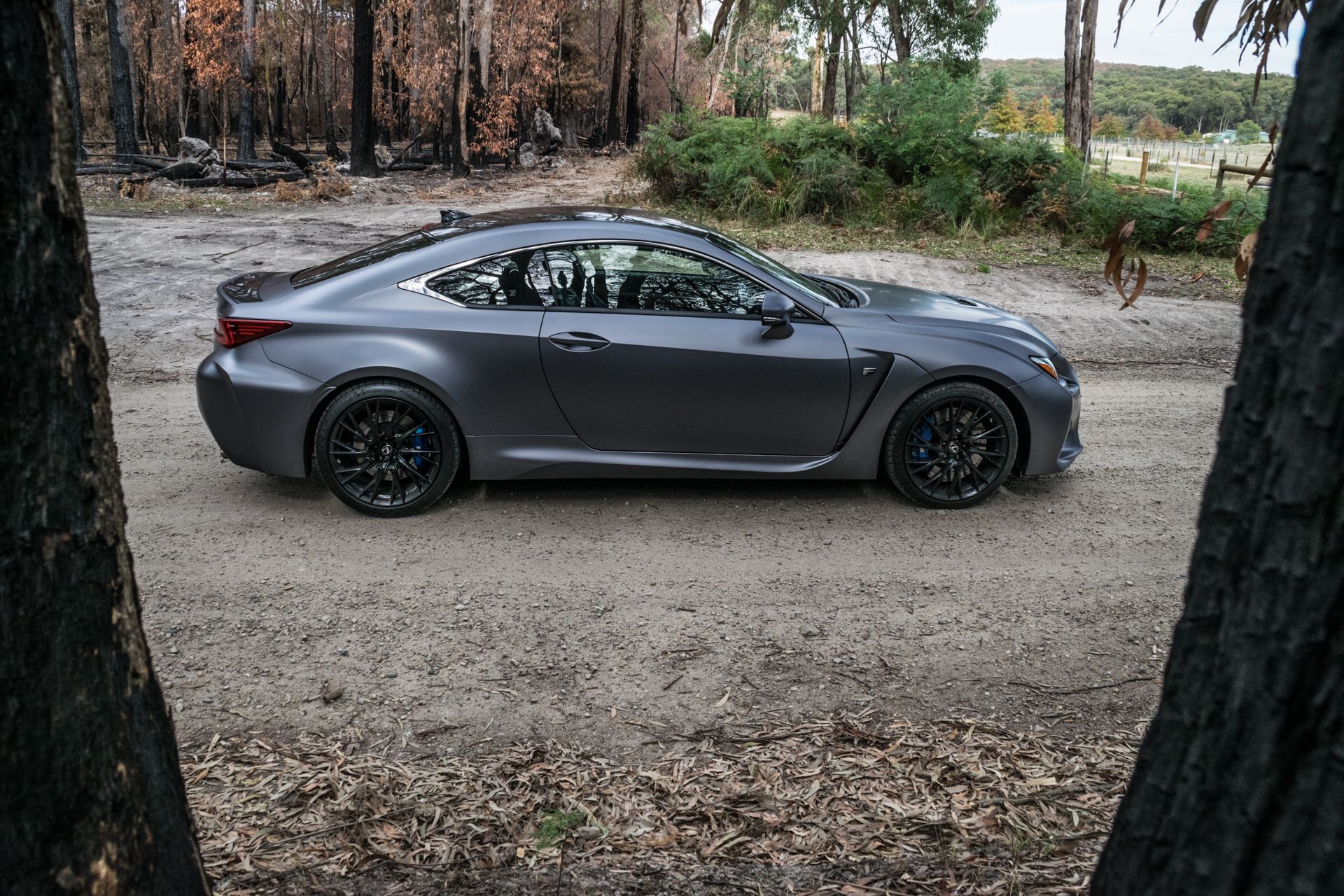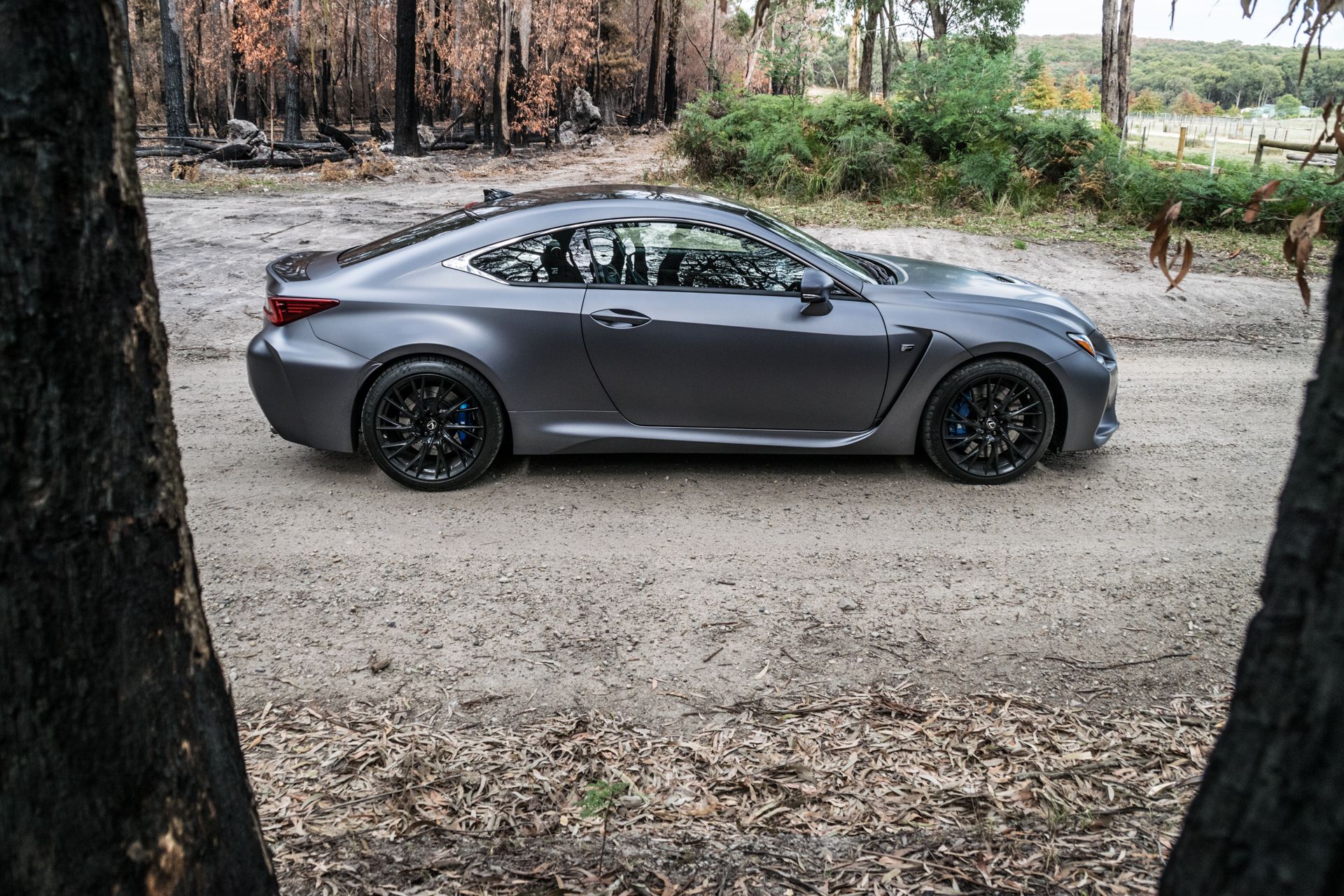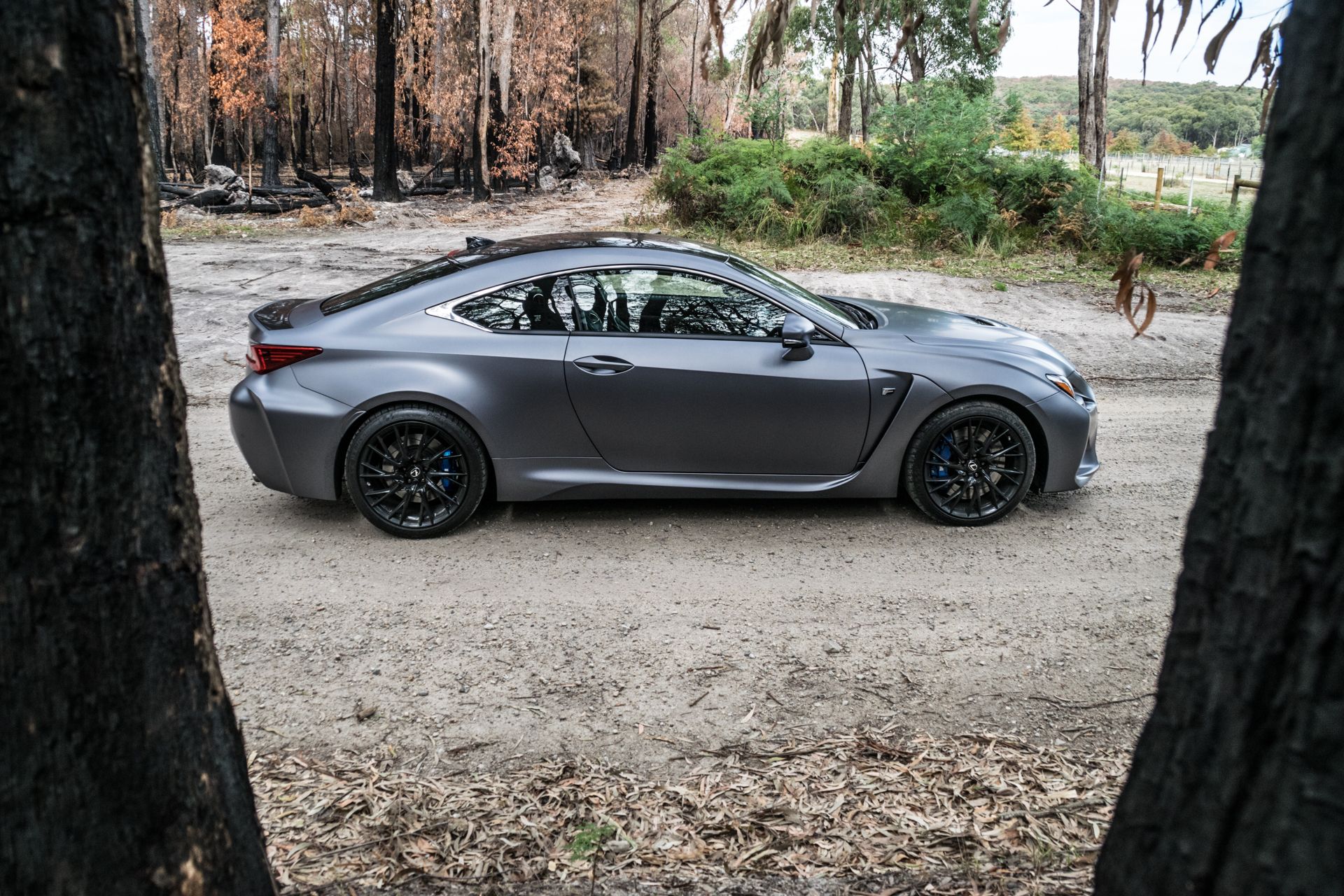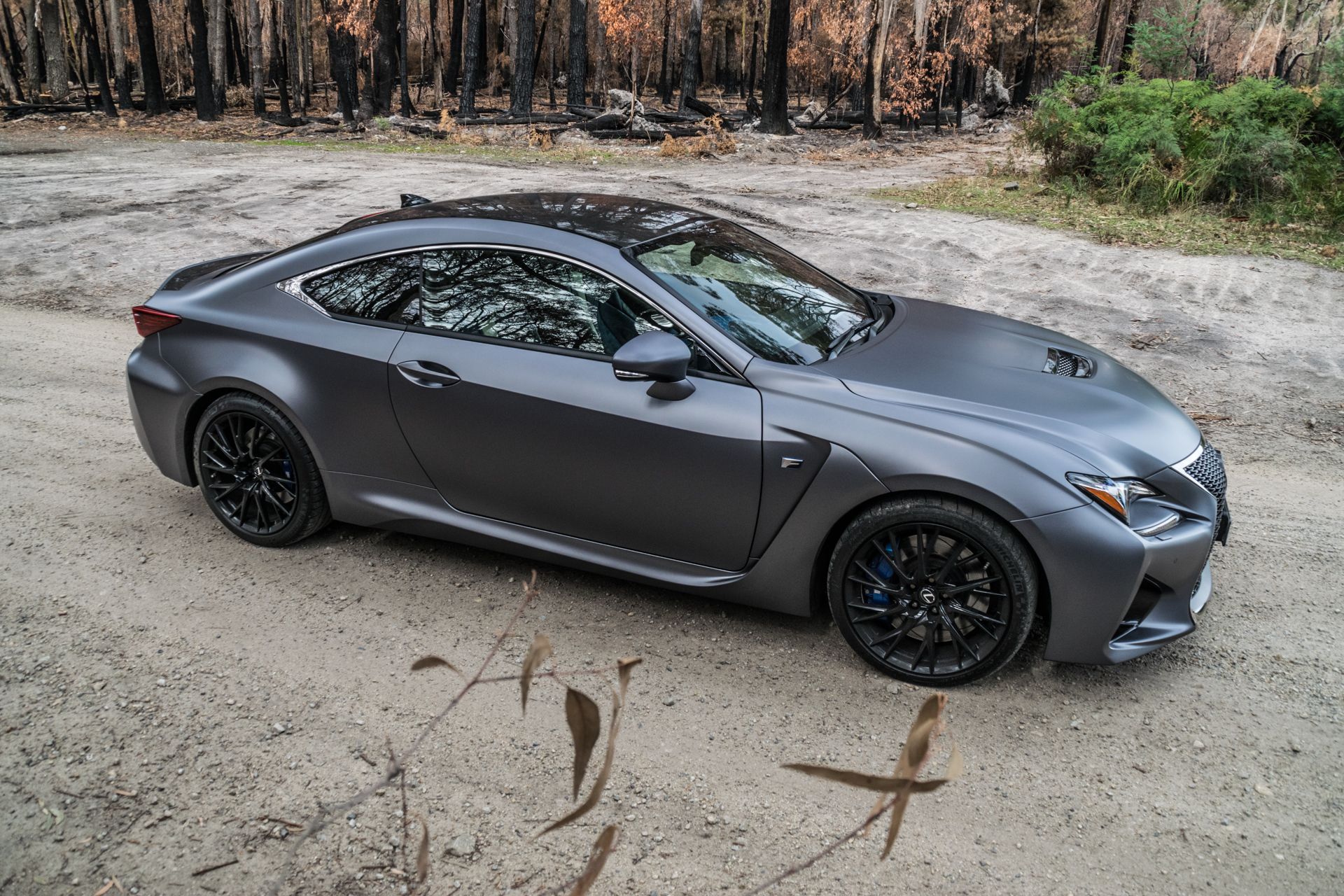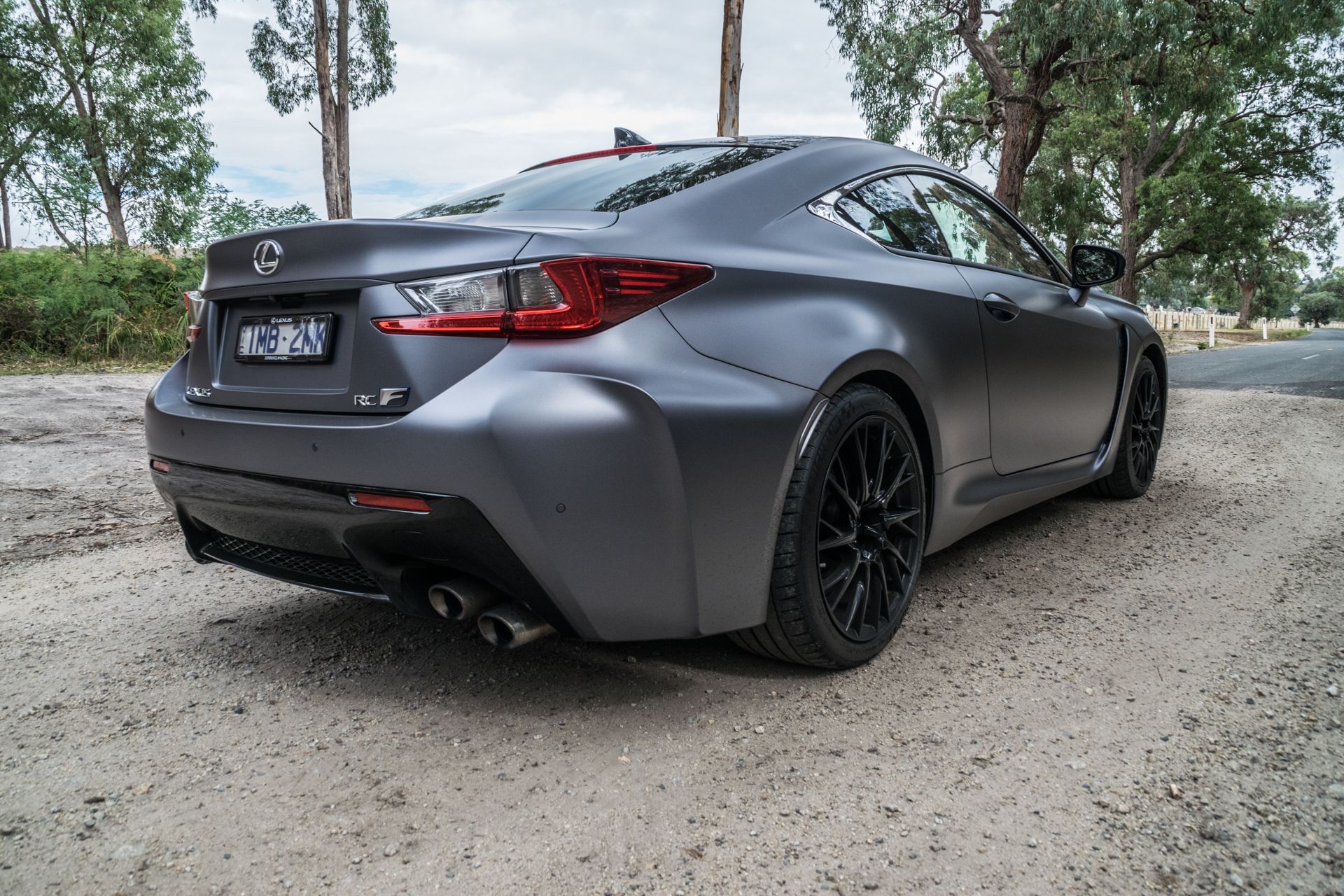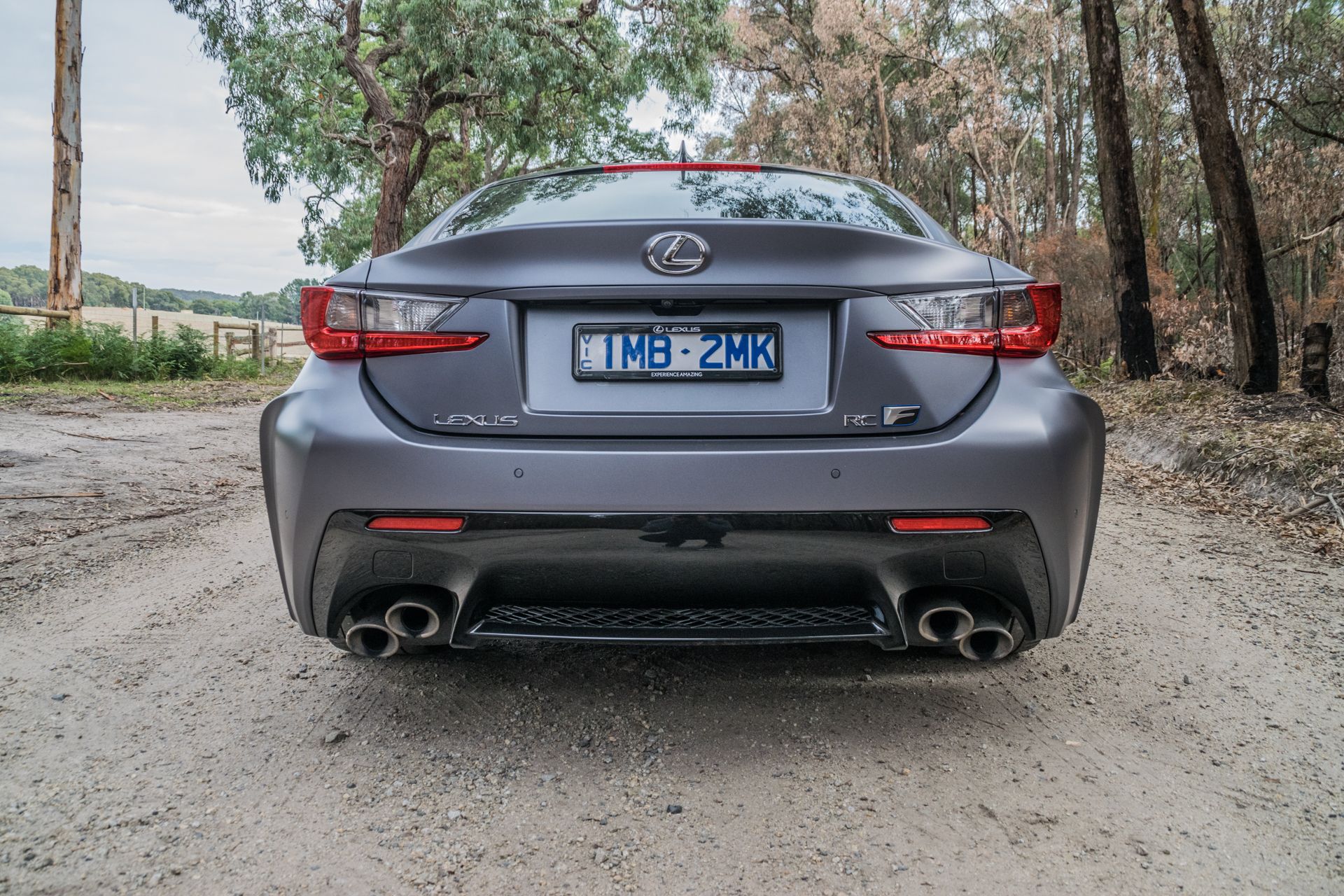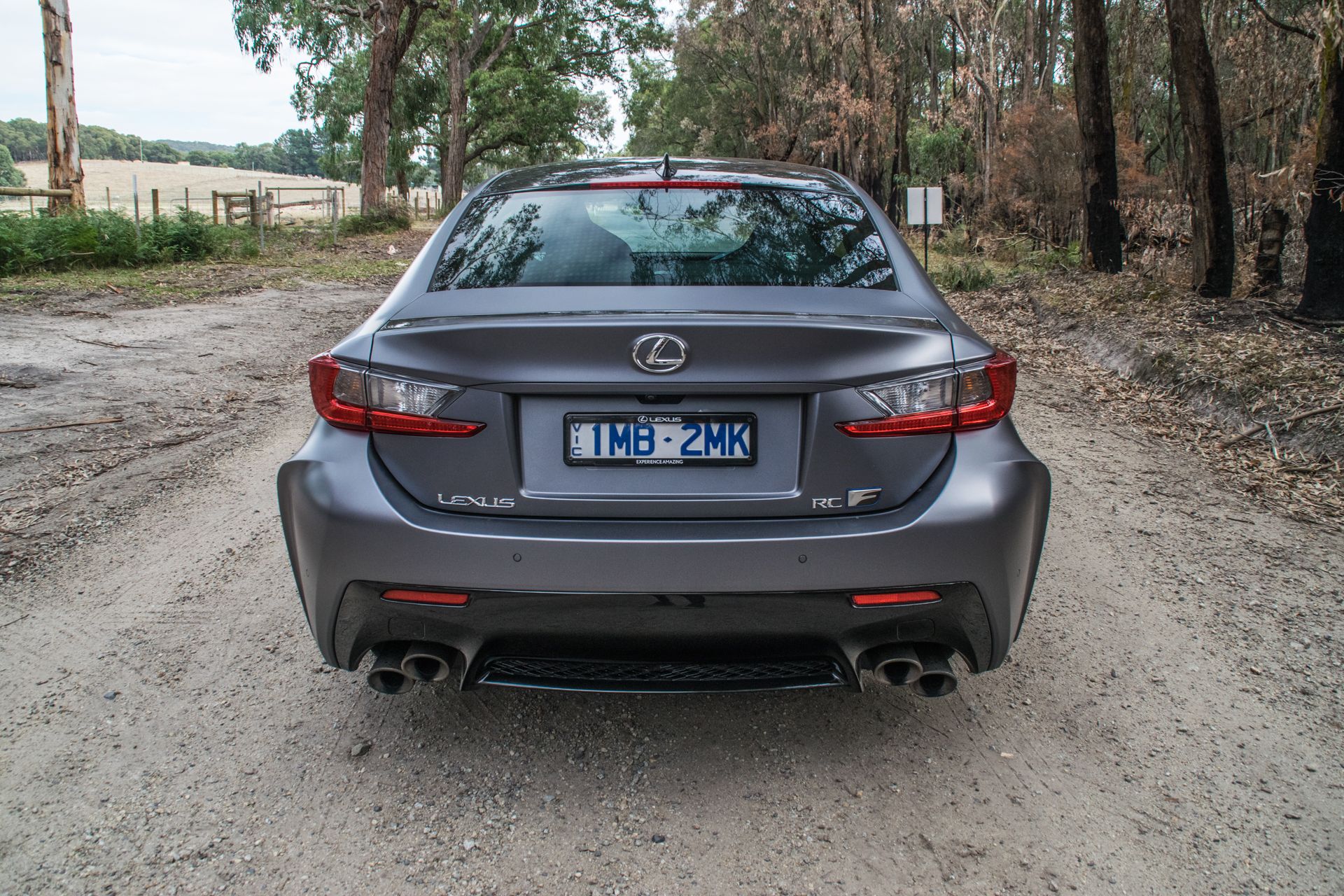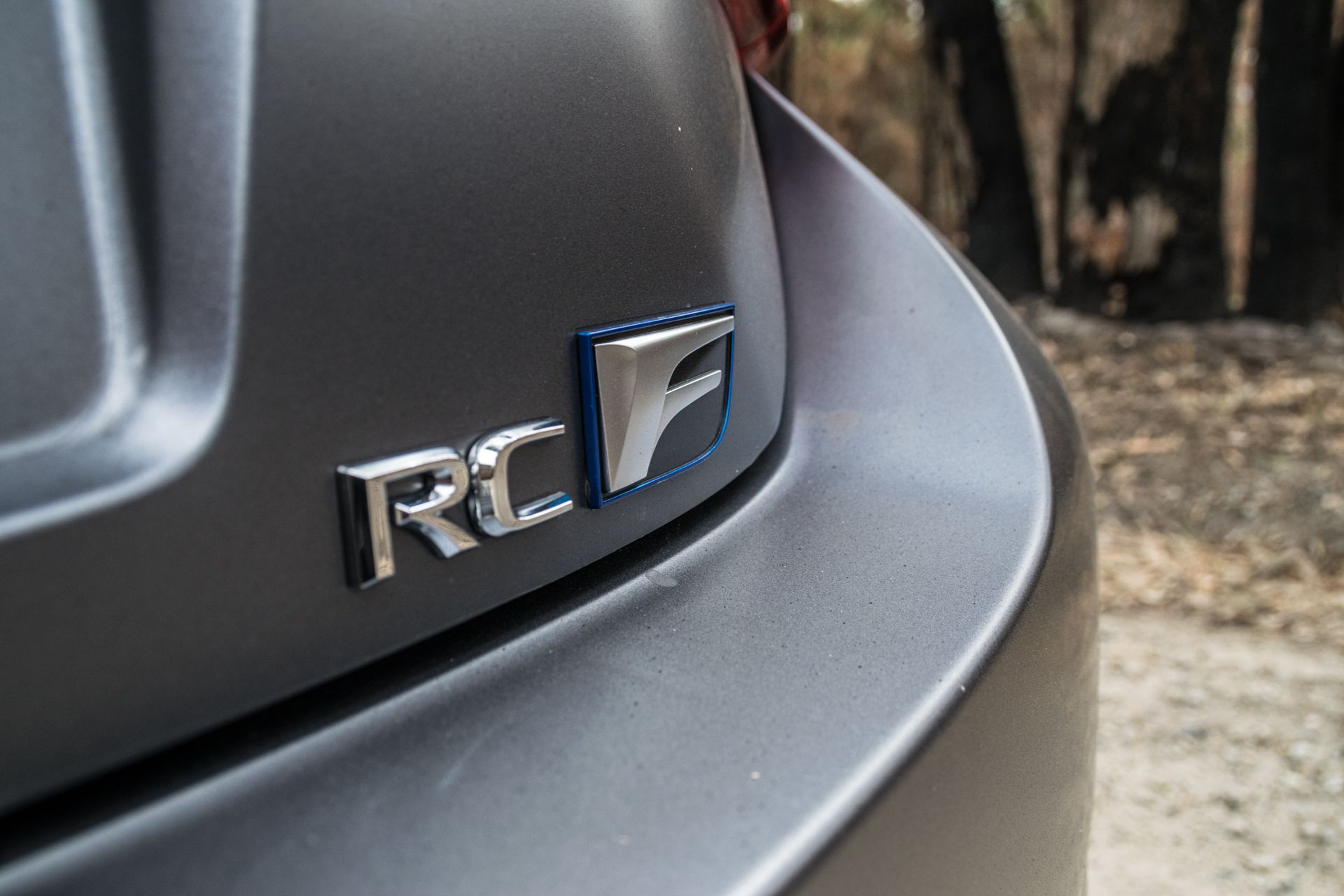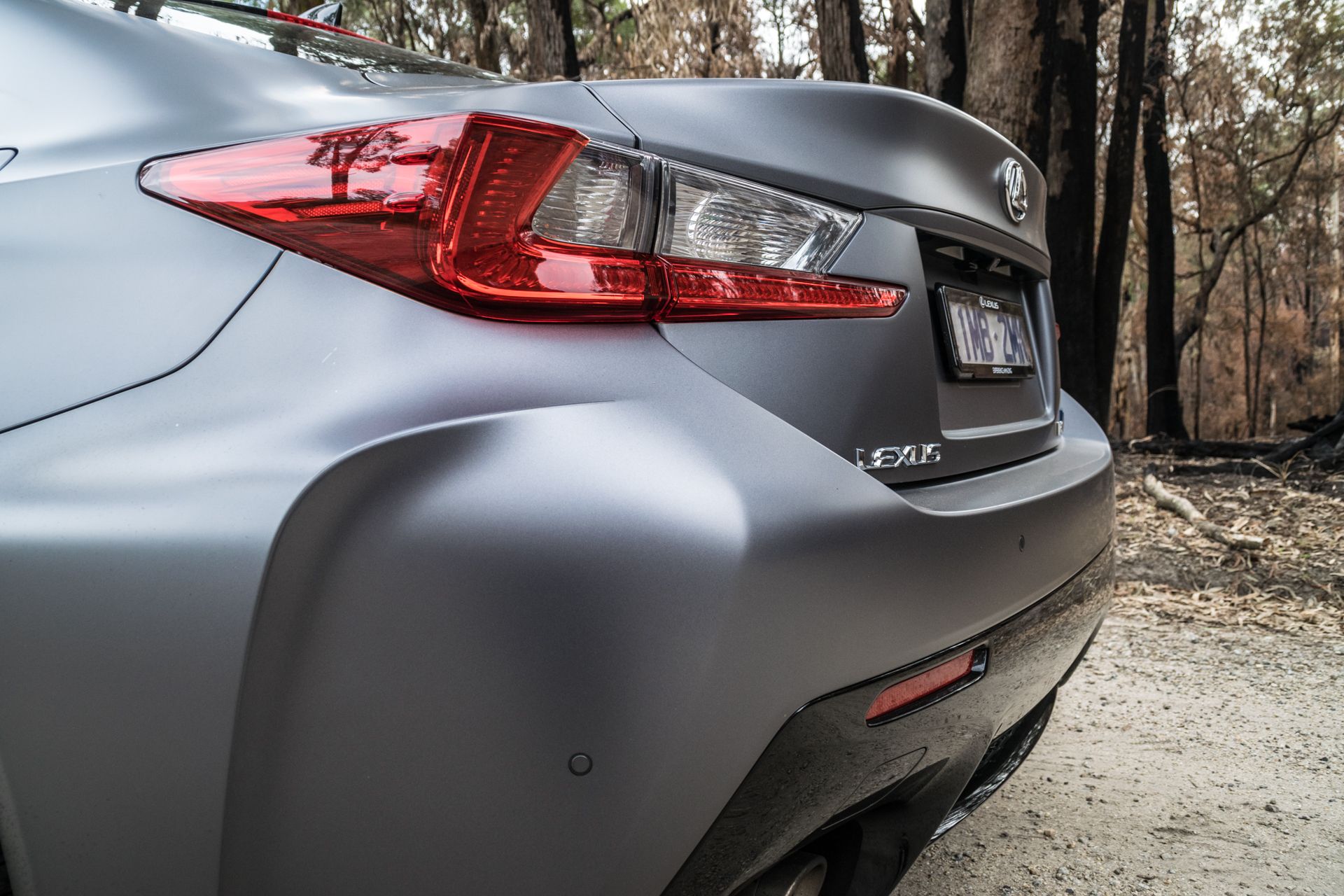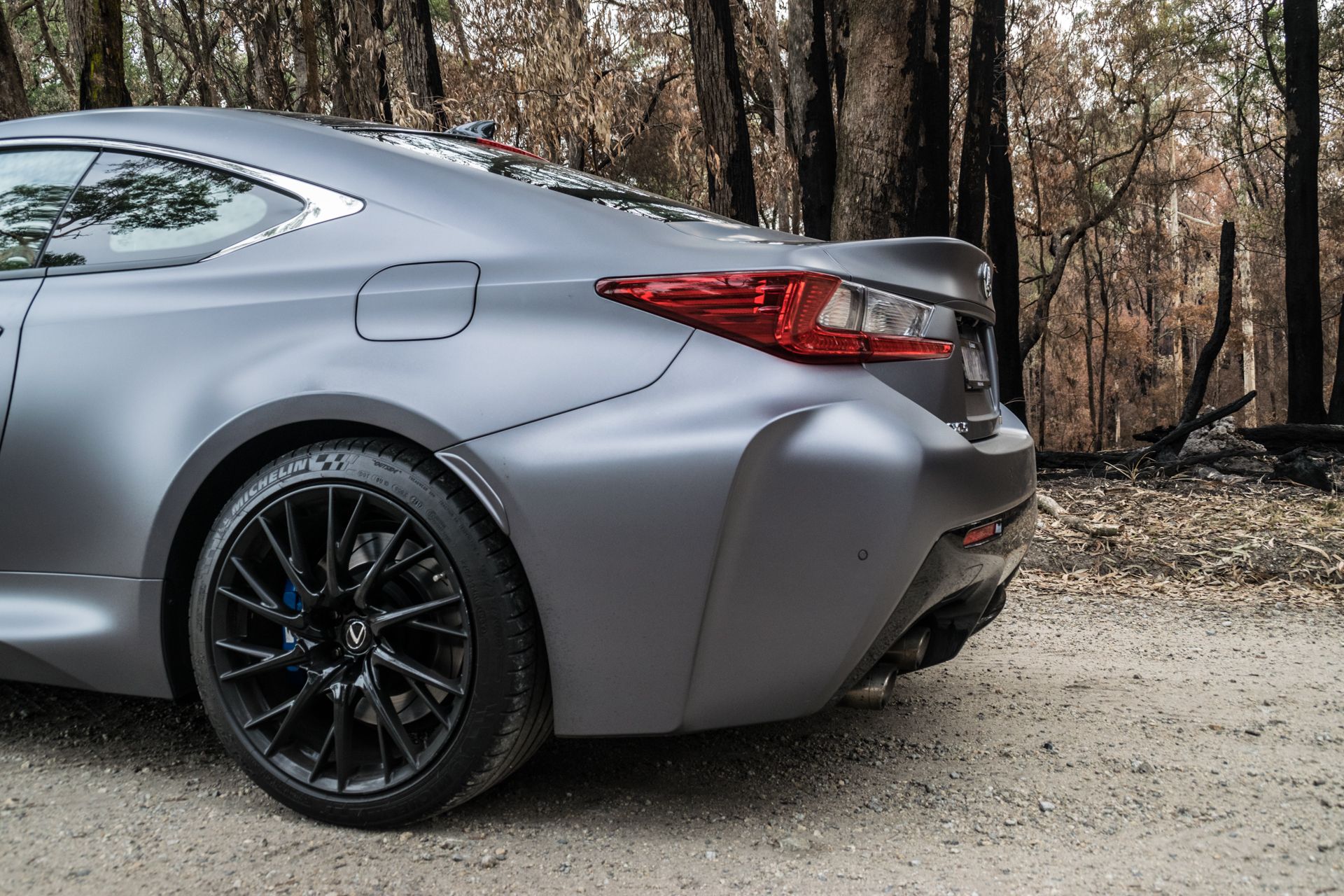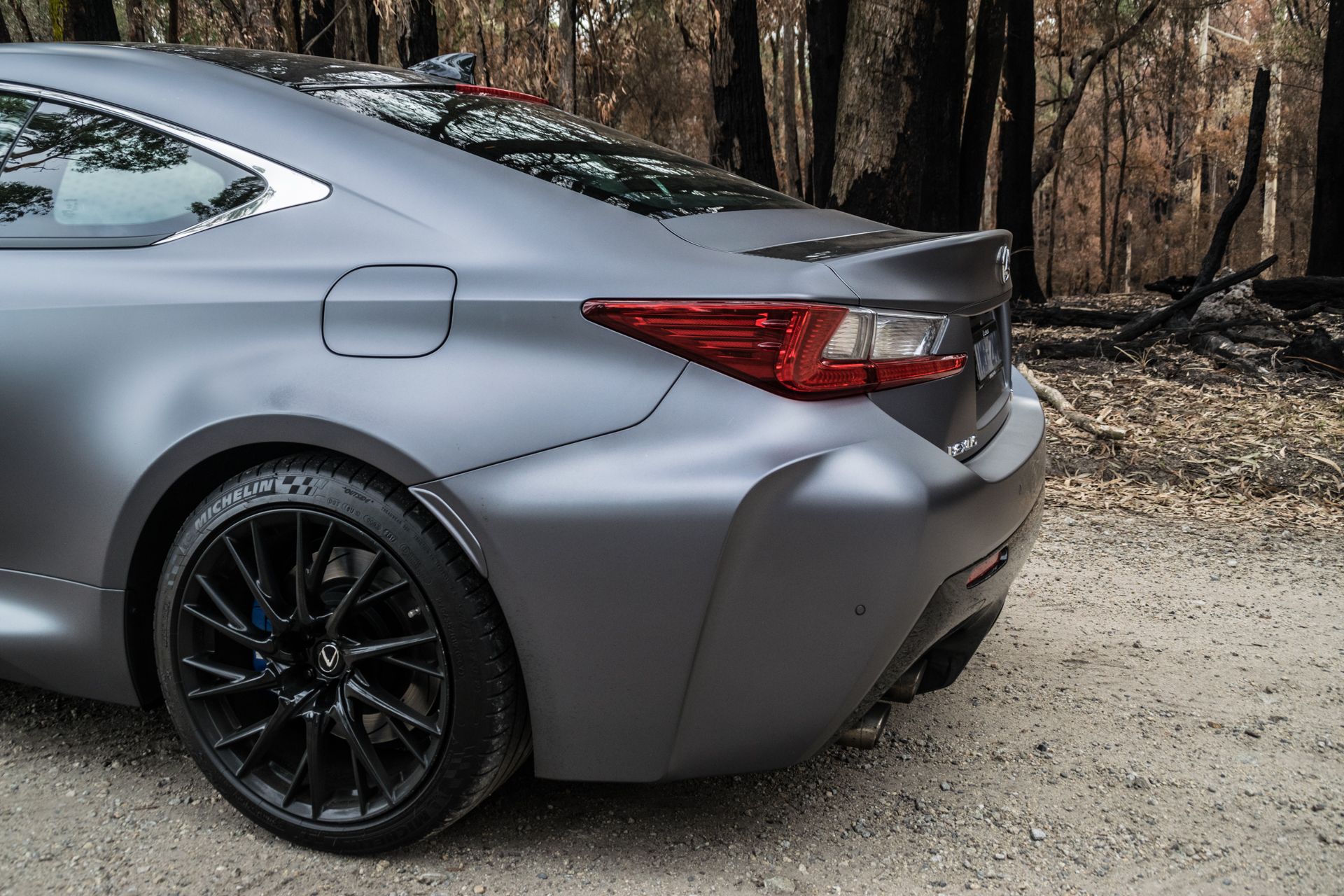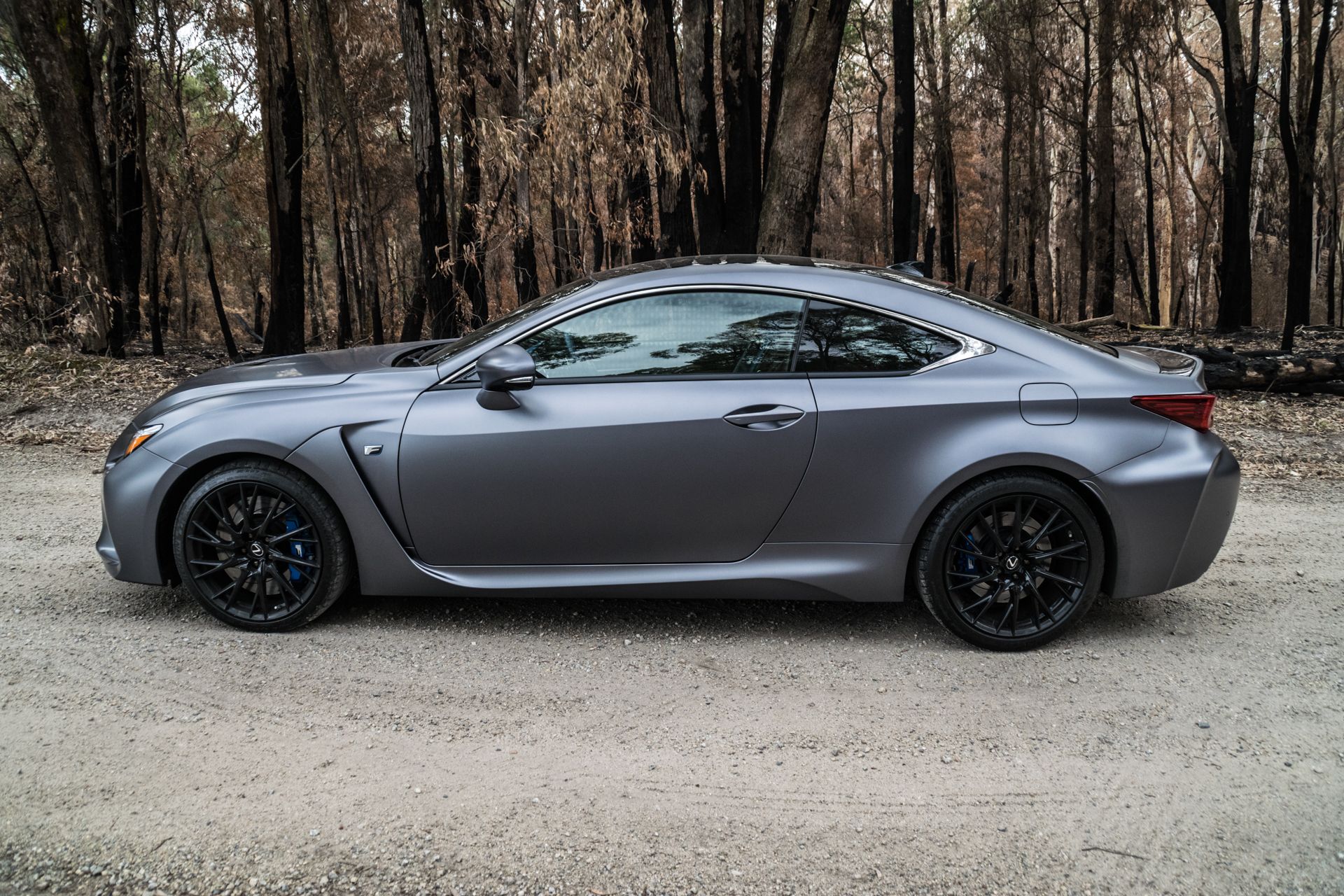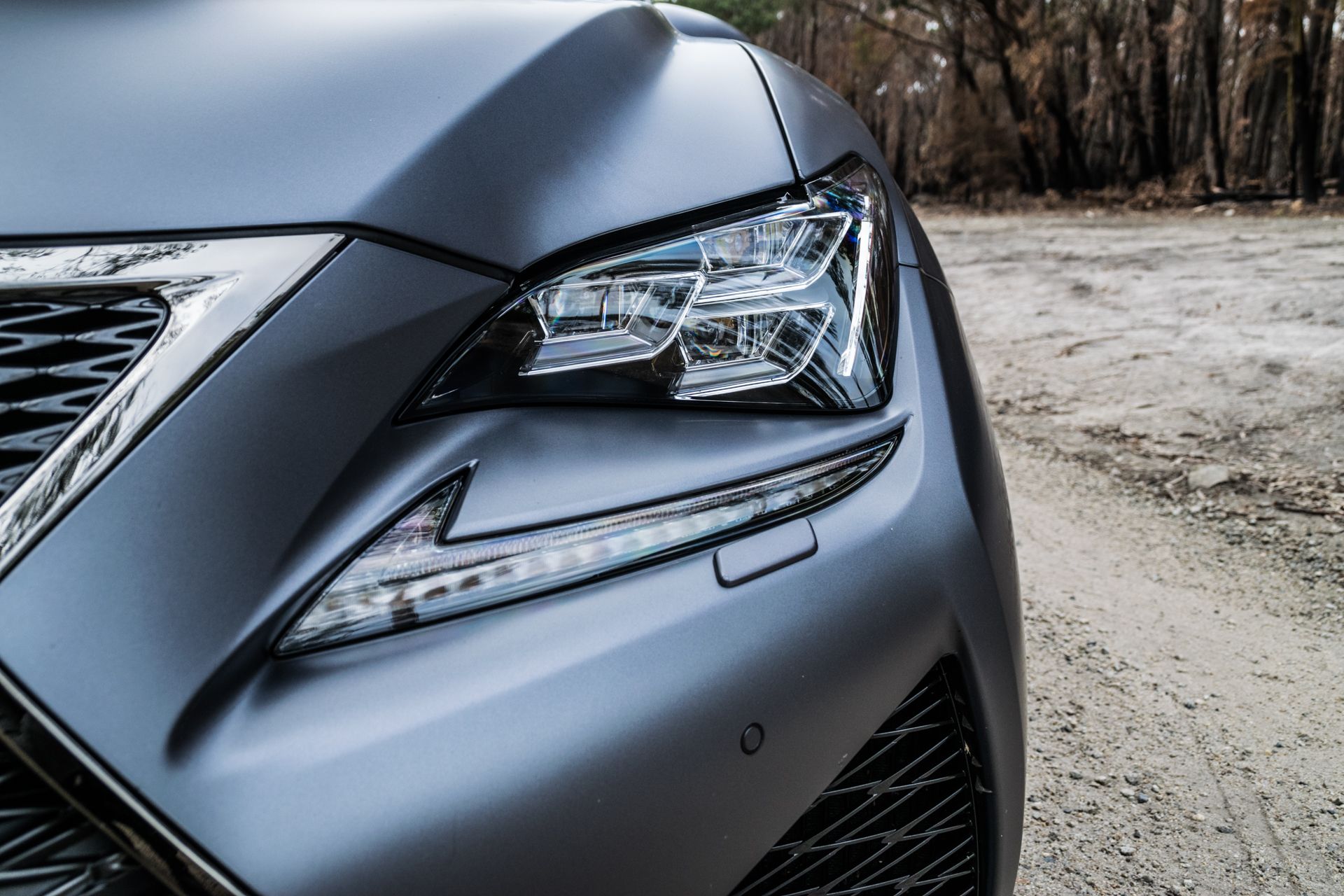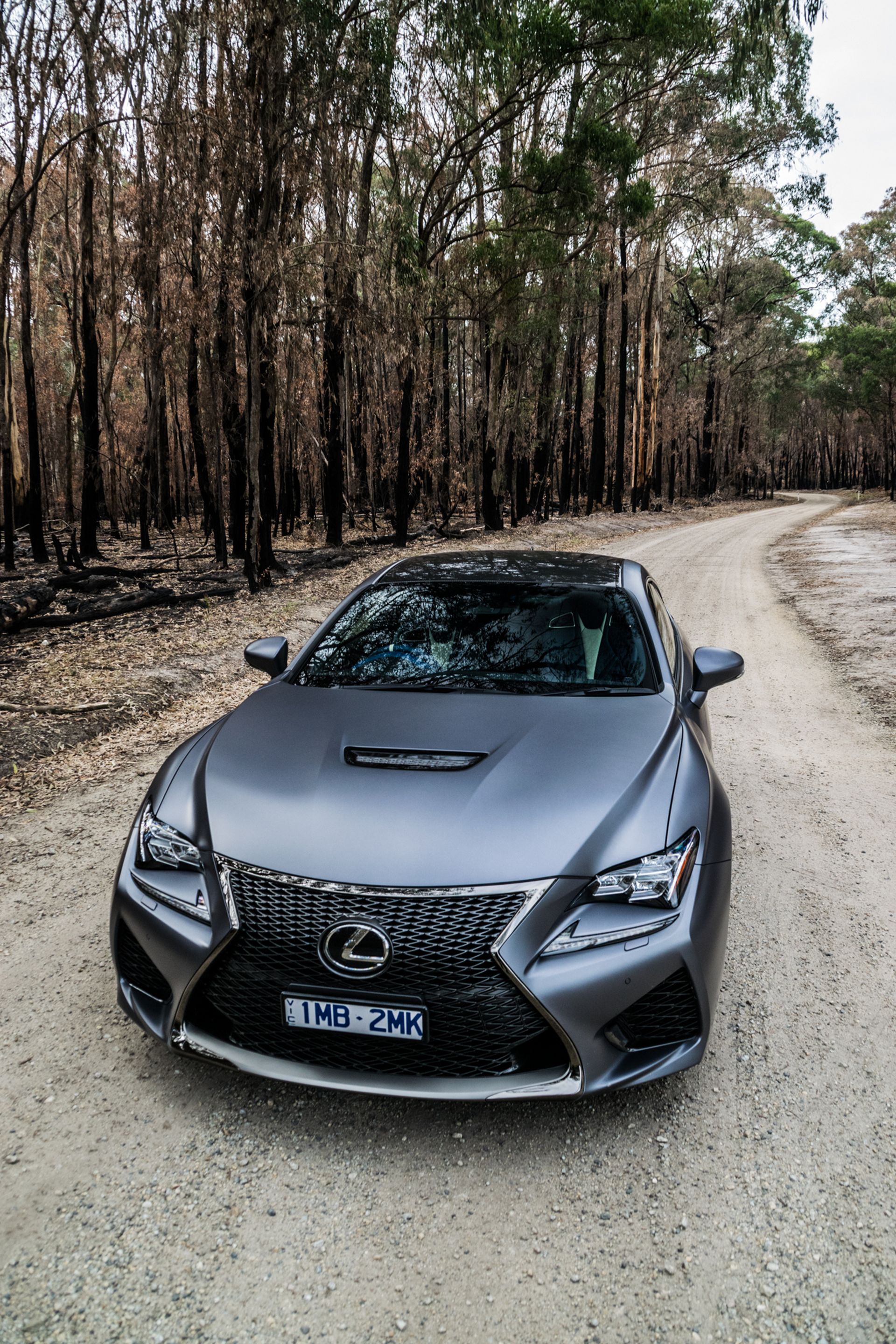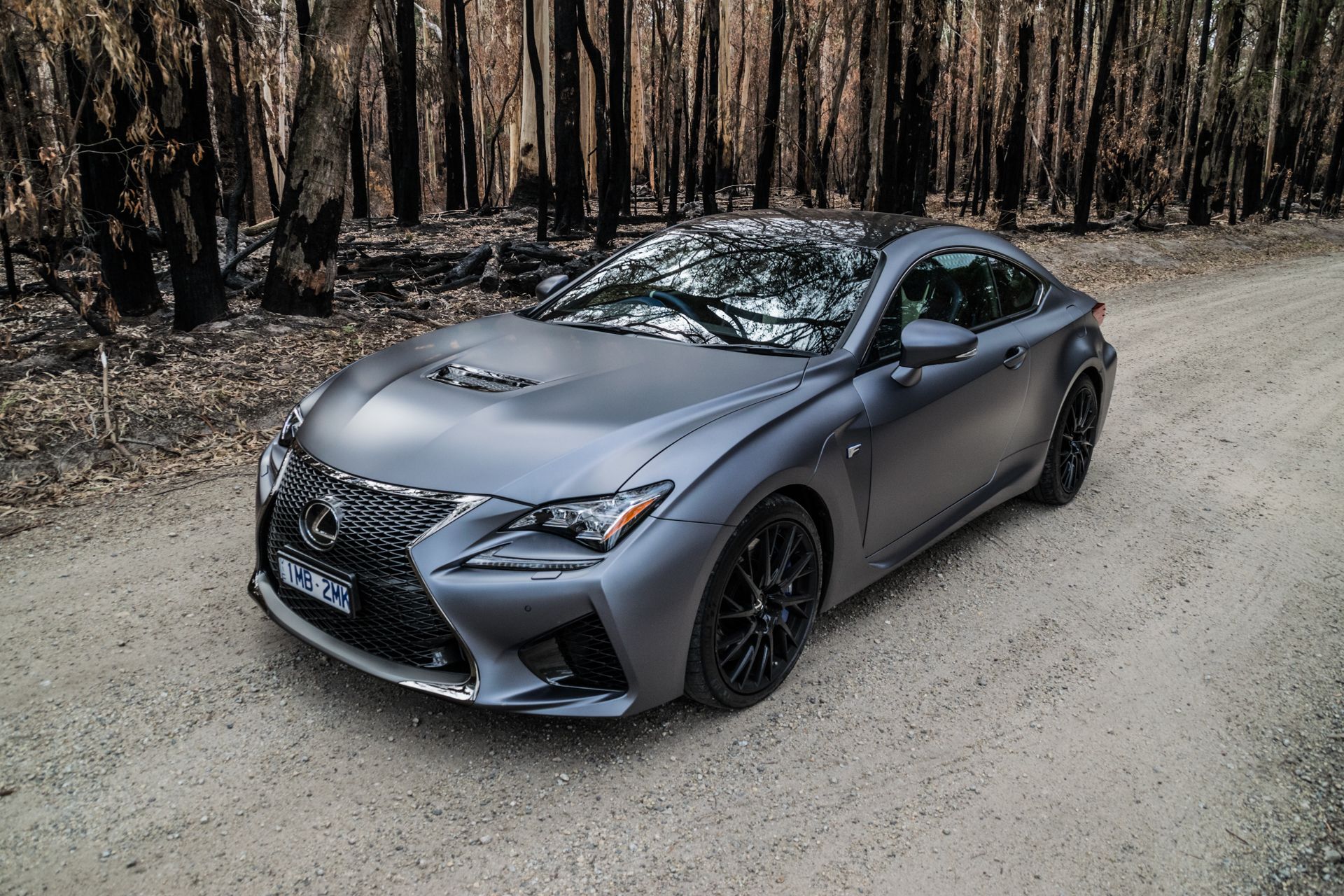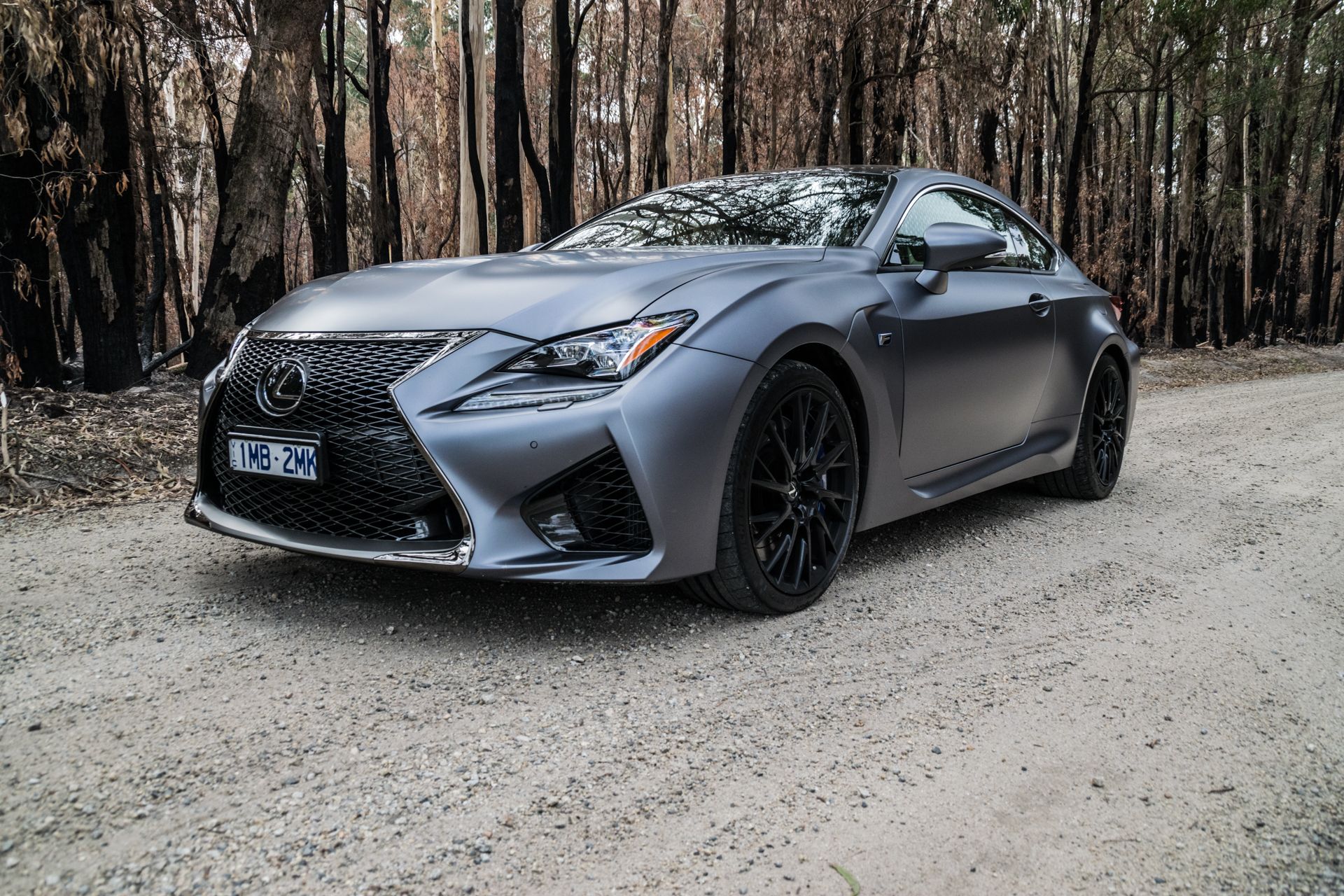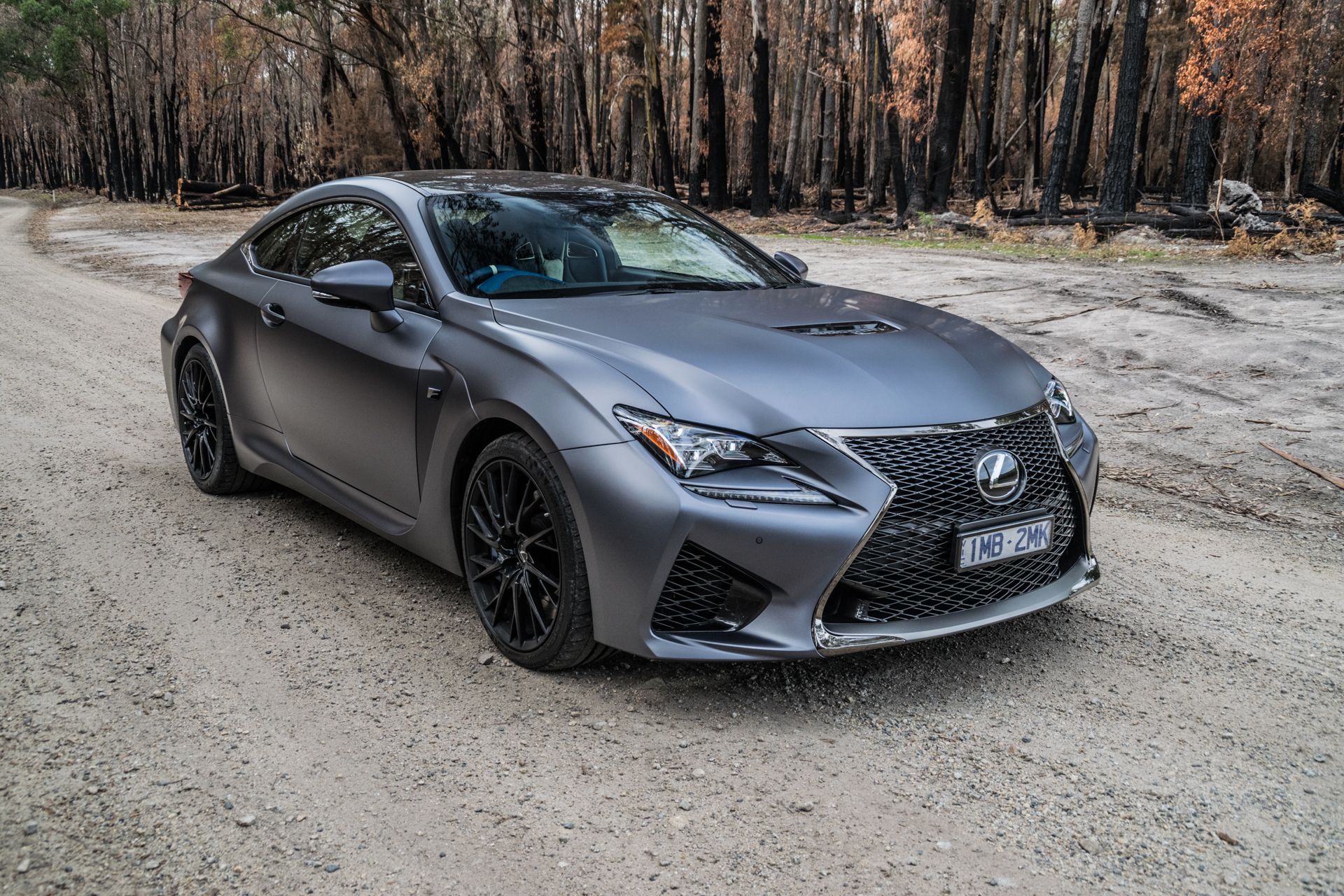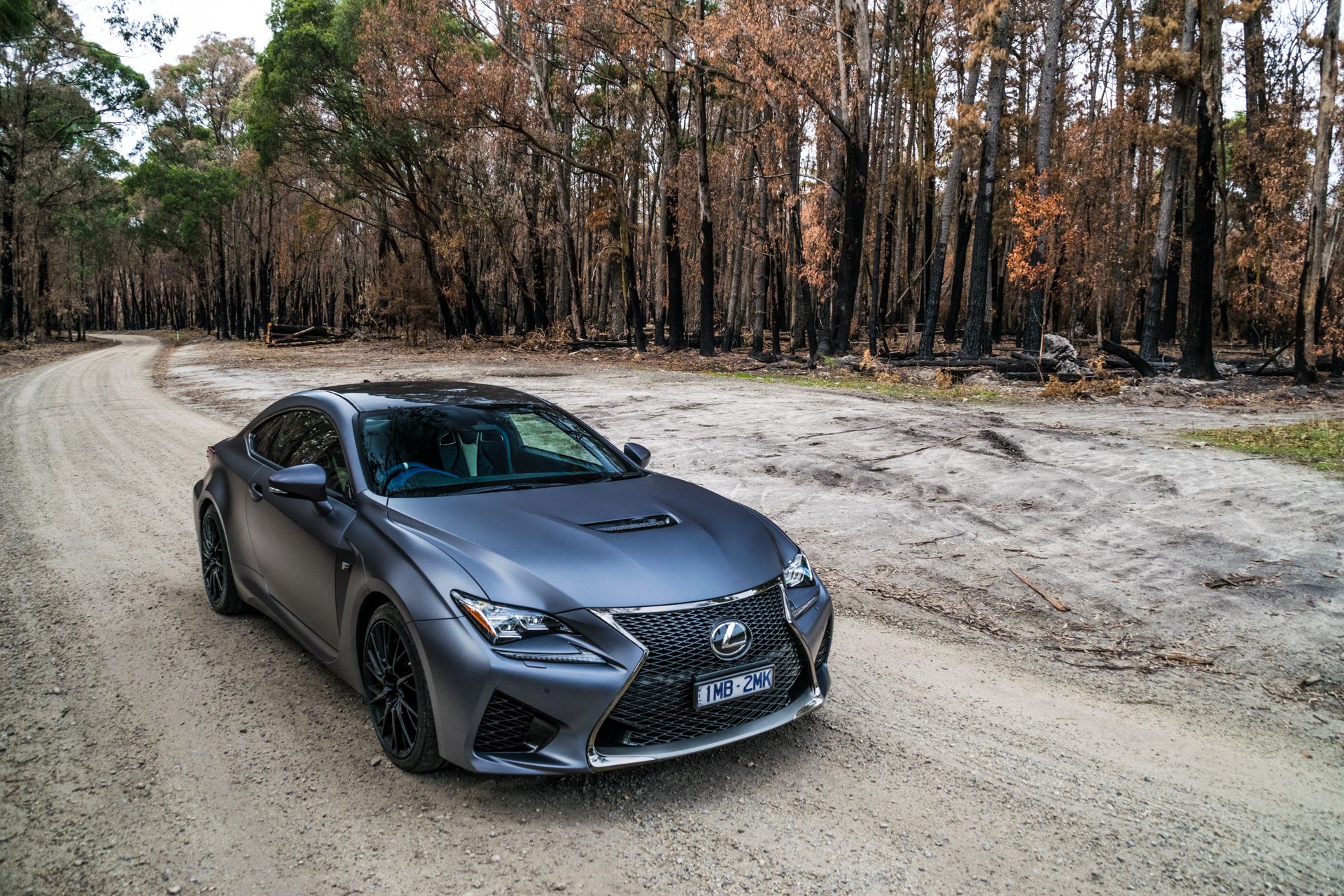Just looking at the 2018 Lexus RC F 10th Anniversary Edition gives you an excellent idea what this sports coupe is all about.
The RC F is unashamedly bold, brutish, and mean. The words ‘subtle’ or ‘refined’ never enter your head when looking at it and it doesn’t given off the slightest hint of sophistication. When painted in Fuji Graphite, like the 10th Anniversary Edition we recently tested over 12 days, this potent Lexus is all about drama. And on that front, it sure delivers.
Pumping The Iron With Finesse
Much like the GS F 10th Anniversary Edition we reviewed recently, the RC F has been introduced to celebrate the 10th anniversary of the F performance sub-brand. In Australia, prices start at $151,929 AUD, while in the U.S., it is priced at $80,810. That’s a $16,160 USD premium over the standard model.
The Fuji Graphite paint, as well as the gloss black wheels and bevy of blue accents, make the two-door coupe a real head-turner. Describing the looks of the car in just a few words is tricky but it does give off a unique vibe which you typically won’t find in vehicles which compete in this segment of the premium car market.
Lexus only built the RC F 10th Anniversary Edition with a single interior configuration. Stepping into the cabin reveals blue leather across the steering wheel, seats, and door panels. There are also some blue Alcantara and carbon fiber trimmings to add to the vehicle’s plush and luxurious feel. For the most part, the cabin is a nice place to spend time and the seats are absolutely superb.
As you find the ideal driving position, it’s hard not to be drawn towards the beautiful gauge cluster of the RC F. In the center, there is a large tachometer while to the right-hand side of it is a tiny speedometer. The car’s various driving modes, such as Eco, Normal, Sport, and Sport+ alter the look of the cluster to match your selection. With Sport+ enabled, for example, the central gauge is blacked-out, allowing you to focus your attention on the road ahead.
Immediately to the side of the gauge cluster is the large infotainment screen. While many car manufacturers seem to tack tablets onto the dashboard’s of their vehicles, designers at Lexus have neatly incorporated the screen into the dash. It may be just out of arm’s reach but the high-definition display is easy enough to read for the driver and front-seat passenger. Located beneath the screen are two air vents and an analog clock which at night, lights up white.
When I was first handed the keys to our tester and got behind the wheel, I quickly glanced at the rear seats and scoffed at their impracticality – but the truth is that it’s quite spacious back there. There is just enough headroom for someone about 6-foot tall and an impressive amount of legroom too. It’s not the best place to sit back and relax in a long journey, but it would not be torturing either.
However, as nice as most of the interior is, it’s not perfect. The main culprit is the center console that looks outdated and at odds with the rest of the cabin. It is dominated by black plastic and looks cheap compared to the soft-touch surfaces found elsewhere. The steering wheel, while nice to hold, feels slightly cheap and looks old-fashioned.
A Brute To Fall For
However, all of the cabin’s shortcomings fade into insignificance when you actually start to drive the thing.
Before doing so, though, it’s worth considering what kind of vehicle the RC F is. While it competes with the BMW M4 and Mercedes-AMG C63, it weighs in at a portly 1,820 kg (4012 lbs). This makes it roughly 300 kg (661 lbs) heavier than an M4. Clearly, this is no lightweight sports car and that’s somethin worth keeping in mind while behind the wheel.
During our time with the RC F, we took it along all manner of roads from smooth highways to bumpy country roads and sweeping mountain passes. It may be a bit of a brute, but it’s a lovable brute.
The highlight of the car is clearly its naturally-aspirated 5.0-liter V8. Whereas the RC F’s rivals are turbocharged, the Lexus is all natural – and all the better for it. The car delivers 471 hp (351 kW) at 7,100 rpm and 390 lb-ft (530 Nm) of torque between 4,800 and 5,600 rpm. Lexus says it can hit 62 mph (100 km/h) in approximately 4.5 seconds and we have no reason to doubt that number. It accelerates briskly off the line with very little fuss, except for the rear tires, which often struggle for grip even with traction control engaged.
On startup, the engine provides a nice little growl and on the street, emits an intoxicating sound. It is not as brutal as those V8s built by Mercedes-AMG, but is certainly one of the finest naturally aspirated powertrains on sale. The endearing character does come at the cost of fuel efficiency. Lexus claims that it can sip 10.9-liters of fuel per 100 km (or 21.5 mpg in the U.S.) but we didn’t get close to that figure and often struggled to eke out more than 320 km (200 miles) to a tank.
Love The Way You Drive
Paired to the fiery engine is Toyota’s AA80E eight-speed automatic transmission from Aisin. This gearbox suits the personality of the car to a tee and provides quick shifts from the moment you set off. In manual mode, the paddle shifters offer a nice feel and a very positive engagement when you pull them, with the ‘box snapping into gear with little fuss even if it isn’t as quick as the dual-clutch gearboxes of the RC F’s rivals.
We rarely drove the car in full-automatic mode when out for spirited drives, but when we did, we enjoyed the gearbox’s ability to telepathically choose the correct gear when braking towards a corner. Just before the turn-in, the car screams into gear with an intoxicating rev-match.
Upon tipping the car into turns, I was immediately impressed with the grip provided by the front end. This is not a car which feels like it is anywhere close to understeering at speeds legal on the street and instead, it is more prone to kicking out its tail at corner exit. When it does, it remains very controllable and provides positive feedback through the steering wheel.
I was also particularly impressed with the brakes of the car. Up front, there are large six-piston calipers clamping down on slotted brake rotors while at the rear, there are four-piston ones. At no stage was there any obvious brake fade when we were feeding the car through tight and twisty mountain roads.
Nevertheless, as nice as the driving experience is, it is impossible not to feel the vehicle’s heft in almost all situations. Whether or making a tight turn, cruising around a sweeping bend, or cresting a bump, the car feels heavy. Evidently, expert chassis tuning can only go so far before physics takes over and the car’s mass starts to gently throw you from side to side during cornering. It’s fortunate then that there are bucket seats fitted as standard to ensure you can retain control over the car.
The Lexus RC F impresses when driven fast, but it also feels great while cruising. On long journeys, it offers superb ride quality and the engine becomes almost silent at highway speeds when the car is in sixth, seventh, or eight gears.
Hurling it around in the twisties is fun, but make no mistake: this is no salsa dancer who seamlessly glides across a dance floor but more of a boxer who, if needed, can use graceful footwork to get around – but would rather just punch you in the face with its rawness.







